- WV App Login
- Site Search
- Report Templates
- Speech Helpers
- SLP Resources
- Top 10 Tips
- Getting an Eval
- Certified SLP
- How to Say the R Sound
- 0-18 Months
- 18-36 Months
- 18-30 Months
- 30-36 Months
- 10-11 Years
- Articulation
- Cleft Palate
- Phonological
- Dysphagia Causes
- Dysphagia Treatment

150+ Vocalic R Words, Phrases, Sentences, and Reading Passages
As promised here are the words for your unlimited use .
If you know others who can use our lists ...
... please share this page using our site share buttons.
Buy Flashcards for Vocalic R Words for $5.99

Explore Our Goal Reaching, Client Centered Products

**NEW** Click on words for picture, audio, & extra practice content!
Vocalic r words, vocalic -ar phrases and sentences.
alarm clock
shuffle cards
old garbage
white garlic
security guard
play the harp
glass marble
start running
yarn basket
He pushed the button on the alarm.
The soldiers in the army stood at attention.
You can see art at the museum.
The dog's bark is scary.
The car is fast.
We will play a game with cards.
It was dark, but the moon was out.
Every summer he visited his grandparents on the farm.
Take the garbage out today.
My food needs garlic.
The guard watched the hallway.
She has played the harp for years.
He is holding a red heart.
I found a marble on the floor.
The star was hanging on the tree.
It was the start of the race.
I work in my yard a lot.
I have many different colors of yarn.
Vocalic -AR Reading Paragraph
When you live on a farm, your day starts early in the morning. The alarm goes off around 4 a.m. It is always dark outside when we wake up, but the stars are pretty to look at.
Some days it feels like your heart needs a jump start. My dog, Barney, helps me wake up by licking my face. Sometimes he will bark at me too. He makes a great guard dog.
Once we get our hearts going, we go downstairs and eat a big breakfast. When breakfast is over, we pick up the yard a little and head to the barn. Working in the barn is like being in the army, there are a lot of rules to stay safe. The barn is quiet in the mornings.
When morning chores are finished it is time for lunch. After lunch we work with the crops until dinner. After dinner we relax from a hard day's work. We like to look at the stars, play marbles and cards, and sometimes we take a ride in the car. Then we go to bed and get ready to do it all again in the morning.
Return to Top of Vocalic R Words Page
Vocalic -AIR Phrases and Sentences
asparagus bunch
hungry bear
beware of dog
wooden chair
run a marathon
married couple
sad nightmare
open parachute
happy parents
talking parrot
nice to share
new sheriff
square block
She is holding an arrow.
I eat my asparagus steamed.
The bear was hunting for food.
The sign says beware of dog.
Matthew sat down on the chair.
They had fun at the fair.
She has long, pretty hair.
The marathon had 500 runners.
They are a married couple.
I had a nightmare yesterday.
He floated down using his parachute.
They love being parents.
How does a parrot talk?
Can I have a bite of your pear?
She is nice to share her ice cream.
The sheriff took the robber to jail.
A square has four sides.
Don't make me tear these papers.
Vocalic -AIR Reading Paragraph
Sheriff of fairview.
Gary was the Sheriff of Fairview. He had lived in Fairview his whole life. His parents and grandparents had lived in Fairview their whole lives too. Gary knew everyone. He remembered that his scariest nightmare was about living somewhere else and not knowing anyone.
Fairview was a town where Gary had experienced a lot of "firsts" in his life. It was where he shot his first arrow, ran his first marathon, saw his first bear, and bought his first parrot. He was even married in the Fairview town square.
Every year, Fairview held its annual fair. It was some of the best fun the town members had all year. They often shared their stories with each other from years before.
During last year's fair, Gary warned everyone to beware of the bear around the town. It had been looking for food and wandered into the town square right during the fair. It scared a lot of people, luckily no one got hurt.
That was the first call Gary received as the new sheriff. He was able to make enough noise and use a chair to scare the bear away after he got to the town square. It was one of the more memorable town fairs in Fairview's history.
Vocalic -ER Phrases and Sentences
butter popcorn
family dinner
shovel dirt
first place
dirty germs
hurt finger
tall ladder
white paper
white skirt
stir around
classroom teacher
male turkey
whisper softly
I put butter on my popcorn.
They sat down for a family dinner.
He had a shovel full of dirt.
He won first place.
He combed the poodle's fur.
Germs are growing on the dishes.
The girl is sitting on the pink chair.
The little boy hurt his finger.
Use the ladder to reach the fruit.
They are both learning math.
Please take out a sheet of paper.
She takes her purse everywhere.
She is wearing her favorite skirt.
The spider waited for flies in the web.
I need to stir the soup.
She is our 5th grade teacher.
A turkey sounds funny when it gobbles.
She whispered into the girl's ear.
Vocalic -ER Reading Paragraph
Favorite teacher.
My science teacher, Mr. Kerr, is my most favorite teacher in the world. Every class period we do the coolest experiments. We have made paper planes, studied what spiders eat for dinner, learned the molecular differences between dirt and butter, and looked at germs under a microscope.
At first, most of our class was nervous to do all of these crazy things, but after studying butter and dirt we were amazed at how cool science is. We told Mr. Kerr our concerns and he reassured us if we would give the experiments a chance, we wouldn't be sorry.
Mr. Kerr is dedicated too. Last year he hurt his shoulder playing basketball. He had to have surgery on it and I'm sure he was in a lot of pain. He didn't care though. He still came to school and taught our class how to make a liquid into a solid by stirring specific materials together. Then he had us climb a ladder and pour it off onto the floor.
He also likes to surprise our class with opportunities to learn. During November, we had a lesson about what has to happen to a turkey before we can eat it. The class thought it would be gross, and some of it was, but we learned a lot about the process. The girl next to me and I agree that we will miss Mr. Kerr's science class.
SEE ALSO: The Best Free App for Speech Therapy

Vocalic -EAR Phrases and Sentences
bushy beard
hospital cafeteria
grocery store cashier
bowl of cereal
crystal chandelier
clear ocean
small hearing aid
side view mirror
near each other
tall pyramid
metal shears
cheap souvenir
steer clear
He is not going to cut his beard.
The hungry lady is in the cafeteria.
The cashier is giving change to the customer.
Have a bowl of cereal for breakfast.
A crystal chandelier is elegant.
They did a cheer at the pep rally.
The ocean is clear and beautiful.
He puts the hearing aid in his ear.
I checked my side view mirror.
The horses are near each other.
Walk to the end of the pier.
We saw the pyramid in the desert.
He is pruning the bush with shears.
He bought a souvenir to remember his trip.
The statue is holding a spear.
He will steer in the right direction.
He is wearing a weird costume.
It is almost the end of the school year.
Vocalic -EAR Reading Paragraph
Bearded storyteller.
The man with the beard had traveled everywhere. He had amazing stories that he would tell to people passing by on the pier. He had trouble hearing so you had to speak up to ask him questions.
He told stories about jobs he had. He was a cashier in Bosnia, a chandelier salesman in Denmark, and a spear sharpener at a museum in Australia. He had the chance to steer a boat in the Baltic Sea, go inside the pyramids in Egypt, and took a picture near the Mona Lisa in Paris.
He had pictures of lots of weird things he had seen all along the way. During his travels he had bought souvenirs at every place he had visited. He had a two way mirror from Nepal, a special wheat cereal from Dubai, a small gladiator spear from Rome, and some pruning shears from Rio de Janeiro that never needed to be sharpened.
He had traveled for years and seen many beautiful places. At the end of his stories he would tell listeners that he only had one regret. Then he would say how he wished he wouldn't have done all of his traveling alone.
Then he would encourage his listeners to find someone special to share their experiences with. People would often cheer because they liked what they learned from him.
Vocalic -IRE Phrases and Sentences
roaring campfire
church choir
clothes dryer
Empire State Building
roaring fire
fireman courage
lost and found flier
see Ireland
metal pliers
sapphire ring
watchful umpire
scary vampire
The boy and his dad admire each other.
They got a first time buyer discount on the home.
They took marshmallows to the campfire.
The choir likes to perform.
She put the clothes into the dryer.
The Empire State Building is in New York City.
The fire kept them warm.
The fireman was very brave.
They posted a lost and found flier to find their dog.
She wants to hire a new worker.
We are going on vacation to Ireland.
Her mom thought she was a liar.
Cut the wire with pliers.
The necklace has a sapphire in it.
He is tired from working hard.
The umpire called a strike.
We saw a vampire in the haunted house.
The fence had barb wire on it.
Vocalic -IRE Reading Paragraph
Vampire jeweler.
Megan was a vampire from Ireland. But she wasn't a typical vampire. She didn't hurt people or fight with anyone. She made sapphire jewelry. She used pliers, silver wire, and beautiful sapphires and other gems to make bracelets, rings, and earrings. Many people admired her work and she had buyers from all over the world who bought her jewelry.
Since vampires don't sleep and don't get tired, Megan had lots of time to make the jewelry. She would sit by a campfire, listen to her favorite choir, and make jewelry all night long.
One day when she was in town getting groceries, she saw a flyer posted in the store. The flyer stated that a person in her town had a fire in their bedroom and all of their belongings had been burned. It also said they had lost all of their jewelry in the fire and they wanted to hire someone to make them new jewelry.
Megan called the number on the flyer. She told the woman on the other end that she wanted to help her replace the jewelry she lost. The woman was grateful and hired Megan right over the phone.
Megan went to work making many new pieces of sapphire jewelry for the woman. Four days later, Megan visited the woman to show her all of the new jewelry.
A fireman had been to visit the woman to talk about how the fire had been started in her bedroom. The fireman told the woman that she was very lucky that the fire had not caught the rest of the house on fire. Megan went in and sat down on the woman's couch to show her the jewelry. The woman was very happy with the jewelry Megan made for her.
"Clean the jewelry one time each month, don't wear them for more than eight days without taking them off, and never put them in the dryer. That would melt the wire," said Megan, giving the woman instructions. The woman agreed, thanked Megan for her hard work, and Megan went home to finish making more jewelry.
Vocalic -OR Phrases and Sentences
bored student
church chorus
yellow corn
thick forest
peel orange
ocean shore
play sports
clothing store
scary tornado
She was bored doing her homework.
The chorus sang beautifully.
We are having corn for dinner.
We knocked on the door three times.
The wood floor made the room look great.
Many trees are in the forest.
She will be four years old in October.
The horn is gold and shiny.
The horse is running fast.
He is going to eat the orange.
Let's eat popcorn during the movie.
Can I pour you a glass of water?
Let's go play by the sea shore.
The shorts were on sale.
You can choose to play many sports.
It was their favorite store to shop at.
It was a big lightning storm.
Mom read a story to her son.
The tornado destroyed many homes.
Vocalic -OR Reading Paragraph
Storm chasing.
Jordan has a cool but dangerous job. He is a storm chaser. He never gets bored. A few times per month, he and his four person crew jump in their cars and chase tornadoes. Jordan wasn't always interested in storms though, he has an interesting story about why he became a storm chaser.
He grew up farming corn with his mom and dad. He rode horses, played sports, and was a typical kid. When he was 17 years old, a tornado touched down in the city he lived in. It traveled four miles south of town and wiped out his family's farm.
Jordan and his family hid in their storm cellar and were not hurt from the tornado, but the tornado destroyed everything his family had. His family was poor for a few years following the tornado while he and his family looked for ways to earn money. Jordan made doors, worked at the grocery store, and even sold popcorn to make money to pay for food.
It was a hard time for Jordan and his family. As a result, Jordan decided to go to college to become a meteorologist. He studied weather and weather patterns. He wanted to learn how tornadoes moved so that he could warn people when they were coming.
About one year ago, all of his hard work paid off when he received funding for his research. Many storm chasers don't make much money, but Jordan didn't care about that. He had lived without a lot of money. Jordan wanted to help people. He was excited about how the money he received would help gather enough information to help more people in the future.
This list of functional words was professionally selected to be the most useful for a child or adult who has difficulty with producing the "Vocalic R" sound.
We encourage you to use this list when practicing at home.
Doing home practice will help your child make much faster progress toward correct production.
Speech-Language Pathologists (SLPs) are only able to see students/clients 30-60 mins (or less) per week.
This is not enough time for your child to overcome an articulation disorder with the "Vocalic R" sound. But with high caseloads...
...it's all SLPs can do.
There's only so much time in the day.
Every day that your child goes without practice it becomes more and more difficult to correct an "Vocalic R" error because he/she continues to say it incorrectly.
SEE ALSO: The Best Books for Speech Therapy Practice

We know life is busy , but if you're reading this you're probably someone who cares about helping their loved one as much as you can.
Practice 5-10 minutes whenever you can, but try to do it on a consistent basis (daily).
Please, please, please use this list to practice.
It will be a great benefit to you and your loved one's progress.
Freebies, Activities, and Specials, Oh My! Sign up for Terrific Therapy Activity Emails
See Past Email Examples
Your information is 100% private & never shared .

Hi! We're Luke and Hollie.
We are both MS CCC-SLPs and fell in love while studying for our degrees. Since then we have done everything together - graduated, worked, and started a family. We spend most of our time with our family and the rest making this site for you.

Top Free Resources

Word Vault Essential

# 1 Chronological Age Calculator

Popular Materials
All in one printable flashcards.

Multiple Meaning Word Mega Pack

Complete Articulation Word Search

New! 111 Articulation Stories

Teaching the Sound Books

Multi-Syllabic Words Flashcards

Apps to Save You Time & Help Your Clients
Articulation therapy + pirate adventures = awesomeness.

This App Will Get Your Kids Talking

Image Credits
Copyright © 2010 –
HomeSpeechHome.com | All Rights Reserved

This website contains affiliate links, meaning if you buy something from them we may make some money (at no cost to you). By using our affiliate links, you are helping to support our site which is a U.S.-based, family-run small business :)

17+ PDF Speech Therapy R Sound Activities {I Spy Articulation!}
The r sound. What speech therapist doesn’t love the r sound? Okay, that would be me. But I do know there are some SLPs out there who do love working on the r sound. That’s why I wanted to help my fellow Speech-Language Pathologists by providing you with a list of speech therapy r sound activities to work on in therapy or to simply send home for extra practice.
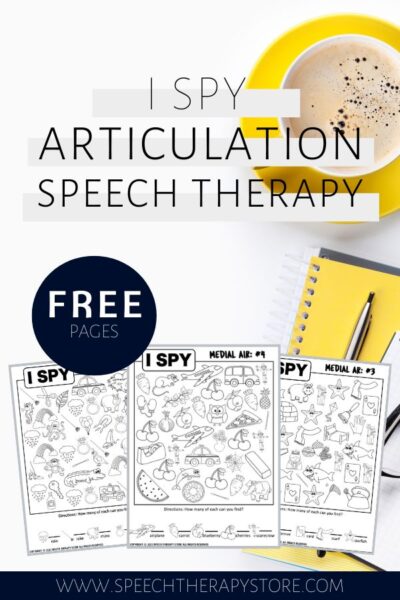
Correct Position for the Target Sound
In the English language, the r sound is a difficult sound to make as well as one of the last sounds to develop. There are two different ways a Speech-Language Pathologist can teach tongue placement for r remediation.
First, let’s review the two different variations for the correct tongue position for producing the r sound:
- Retroflexed R
The two different tongue positions are very similar and vary in mid-tongue and tongue tip placements:
- Teeth: The /r/ sound is made by having a slight gap between the teeth.
- Lips: Lips should be in a neutral position and not rounded. (A rounded lip shape might lead to a /w/ in place of an /r/ sound, such as “wed” for the word “red”.
- Sides of the Tongue: Be sure to place the sides of the tongue against the upper side of your teeth to allow for the passage of air to go down the center of the tongue.
- Retroflexed Tongue Position: Have the mid-tongue / back of the tongue somewhat tense but not bunched up. Then place the tip of the tongue pointing up just past the alveolar ridge.
- Bunched Tongue Position: Have the mid-tongue bunched up near the roof of the mouth / back of the mouth. Then place the tip of the tongue pointing down or straight.
- Air: Then blow a skinny stream of air over the center of your tongue (you do not want the air to come out the sides of the tongue).
- Voice: The r sound is also a voiced sound so your voice box or vocal cords should vibrate. You can tell that their voice is turned on by touching your voice box on your neck and feeling it vibrate.

R Speech Sounds
- Prevocalic R – is when the r sound comes before a vowel sound, such as initial r words like “red” or “row”.
- Vocalic R. – vocalic r words are when the r sound comes after a vowel sound, such as: or, ar, er, ear, ire, air. (more, far, later, hear, hire, pair)

Here’s an r word list for you to use in therapy or at home practice to work on your student or child’s speech.
- For Example: run, rest, ride, rake, root, parade, tarp, harp, worm, farm, soccer, wire, weather, faster, baker
See full list of 1220+ R words at the word level, phrase level, and sentence level here.

Different Word Positions: R Words Speech Therapy
Initial position of words.
The initial position is the r sound at the beginning of words. For example, “rock” or “race”.
Middle of Word
Some words have the r sound in the medial position of a word, such as “scared”, “tired”, and “fork”.
End of Words
The final positions of words are when the target sound is at the end of a word. For example, “tiger” or “star”.
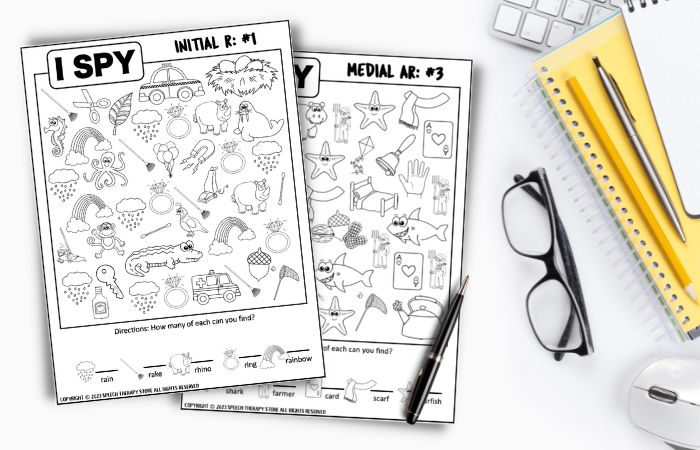
SEE ALSO: 21 Best Reinforcement Games for Speech Therapy
Speech therapy r sound activities.
Below I’ve outlined my I Spy Articulation Worksheets along with some other speech therapy activities that can be used to make your speech therapy sessions a breeze this year.

I Spy Articulation – Sound Game
If you’re looking for an amazing freebie then you’re in the right spot.
I’ve created a fun and engaging I Spy activity that any student is sure to love!
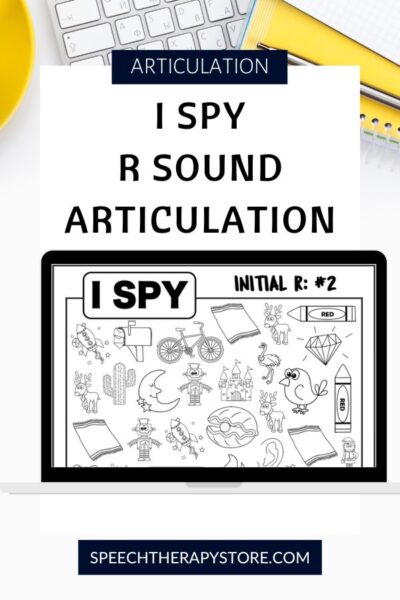
Conversation Level
Articulation Reading Passages and Conversations by Speech Therapy Store – Be sure to check out my TPT product if you’re in need of reading and conversational level articulation activities.
These activity sheets would be perfect for you! You could even have your students work on identifying the main idea of the reading passages.
Bonus Points – This product also comes with a digital version making it also perfect for teletherapy.
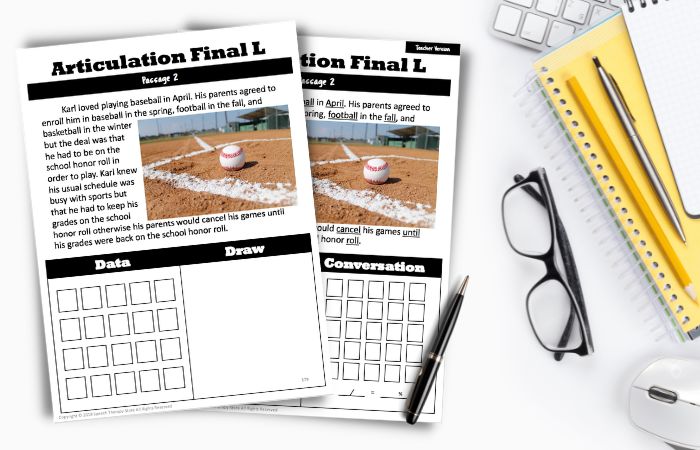
Articulation Games
Free Articulation Games for Speech Therapy by Speech Therapy Store – Help your child produce a good initial r sound, medial sound, or final sound with a sound game from the list above.

Flash Cards
Another fun activity is to use interactive flash cards right from your computer.
Using real life photos is a fun way to work on r articulation therapy in connected speech with your older students or middle school aged students.
- Interactive Flash Cards – Have fun using our interactive r flash cards right from your computer! We’ve included 25 flash cards for the initial r, medial r, and final r for a total of 75 interactive flash cards to use with your students or clients right from your computer.

SEE ALSO: Free Articulation Games for Speech Therapy
Picture cards.
If you’re in need of picture cards to work on the r sound then be sure to check out these free resources below.
- Free Interactive Nature Themed Bundle – You can use these digitally interactive with fillable forms and checkboxes right from your computer or you can simply print them out.

- Free Interactive Technology Themed Bundle – Grab this digitally interactive technology themed bundle with fillable forms and checkboxes right from your computer or you can simply print them out.

Need Sound Practice for other Specific Sounds?
You won’t want to miss out on my complete growing list of all my articulation word lists for different sound disorders!
This list includes s blends and coming soon l blends and r blends.

SEE ALSO: 279+ Free Speech Therapy Digital Materials
Correct production – effective r therapy.
Here are a handful of different types of speech therapy exercises to help your speech students in the process of articulation therapy produce the tricky r sound. You can even grab a tongue depressor to use as a tactile cue.
- Teach Tongue and Mouth Anatomy: Start by teaching the parts of the tongue and mouth that will help with cueing for articulation placement. Grab the R Sound Freebie – Anatomy of Tongue and Mouth for Speech Therapy by Speechy Things.
- Phonemic Awareness, Auditory Discrimination, & Articulation: Practice targeting all three skills with this free trial of Locate! Discriminate! Articulate! – /r/: FREE TRIAL VERSION by OTTeR Speech.
- Phonemic Awareness: Have your students start by identifying where they hear the r sound in a word. Use this Phonemic Awareness – R Freebie by michjco to get started.
- Perception Training: Start with R Perception Training by having the student identify the difference between the correct R sound and the incorrect R sound. Grab the R Sound Perception Training FREEBIE: Early R Speech Therapy Activities from Speechy Things.
- Vocalic R Visual Cues: Have students working on the vocalic R? Grad this free Vocalic R Visual – Free / English Only worksheet from The Spanish Speechie.
- Minimal Pairs: Use minimal pairs to work on the r sound. Have your students identify the /r/ vs. the /w/ sound with the Free r/w Minimal Pairs Hide & Seek Speech – School Theme – Boom Cards & PPT by Little Speech Shop.

In Conclusion: Speech Therapy R Sound Activities
We hope you have found this article helpful for working on your child or student’s r sound.
Be sure to grab your 17+ paged ready to go worksheets below. The pages come in initial, medial, and the final sound position perfect for sending home or using in private practice.
Good luck! If you need anything else be sure to check out my freebie library.

Grab Your Speech Therapy R Sound Activities Freebie Here!
Simply enter your name and email to have these speech therapy R sound activities emailed directly to your inbox!
Grab our R Sound I SPY GAME!
Want even more speech therapy r sound activities.
- 1,220+ R Words Speech Therapy {Interactive Flashcards!}
- 21 Best Reinforcement Games for Speech Therapy
- 261+ Free Ideas for Digital Therapy
- 917+ Best Free Boom Cards for Speech Therapy
- 11 Free Articulation Games for Speech Therapy
Want the Best of the Bests?
Be sure to check out our most popular posts below!
- Best IEP Resources
- 71+ Free Social Problem-Solving Scenarios
- 430+ Free Multisyllabic Words List Activity Bundle
- 432+ Free Measurable IEP Goals and Objectives Bank
- 279+ Free Speech Therapy Digital Materials
- 179+ Free Speech Therapy Wh-Questions Printable

Filterable Flashcards
- Print Flashcards
- Our Favorites
- Affiliate Notice
500+ Free SLP Vocalic R Materials, Games, Activities, Flashcards, and more!
Virtual games and activities, freeslp offers tons of virtual slp materials for the vocalic (vowelized r) r sound. to help target the vocalic r sound in the initial, medial, and final positions, we have created vocalic r tic-tac-toe, connect 4, virtual flashcards, virtual progression cards, battleship, spot-it, candy land, soccer, painting, and more to view our all free vowelized r sound virtual games and materials, click below:, vocalic r sound games and activities link.

Downloadable Vowelized R Materials
We also have tons of free no-prep downloadable vocalic r sound materials. vocalic r sound printables that we currently have include: vocalic r flashcards, qr code scavenger hunt, progression cards, spot-it, word finds, tic-tac-toe, bingo, candy land, connect 4, battleship and more if you're looking for more engaging ways to teach the vowelized r sounds, hopefully you find these materials helpful to view our all free vowelized r sound virtual games and materials, click below:, vowelized r no-prep downloadables.

Vocalic R Animated Videos
Animated videos for each sound teaching how to produce the sound as well as animated articulation adventures for each sound adventure across safaris, space, the world of minecraft, and more while teaching your child how to make awesome vocalic r sounds to view our all free vocalic r animated videos, click the link below:.

Over 1,000+ Flashcards that you can sort by target sound, position of sound, syllables, blends, and more! Add words to your custom word list and print out the flashcards! To view our all free Vowelized R sounds virtual games and materials, click below:
Filterable flashcards.
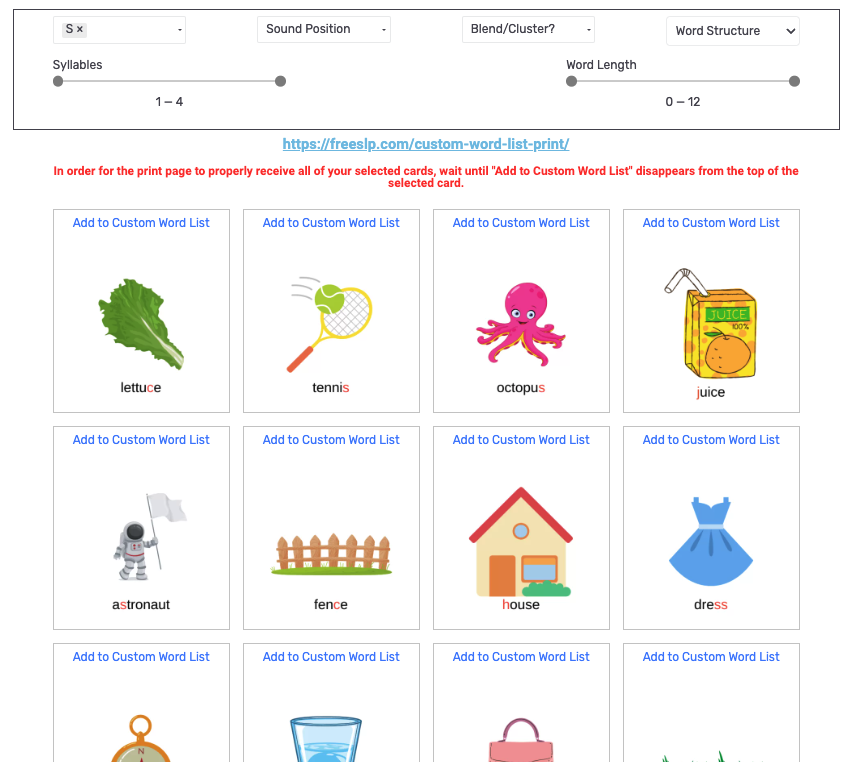
Vocalic R overview page
What age should my kid be able to say the r sound.
Children typically are able to correctly produce the R sound around 5 years old.
Is the R sound a voiced sound?
Yes, the R sound is a voiced sound.
Is the R sound a liquid sound?
Yes the R sound is a liquid sound.
How do I make the R sound?
How to make the “r” sound:.
There are two ways that we can make the “r” sound.
- The retroflexed “r” which means we bring our tongue tip up towards the top of our mouth.
- The humped “r”which means we place the tip of our tongue on our lower gums behind the bottom teeth. By doing so, the back of the tongue “humps” up
To find out which technique is best for the child, have them say target words from our flashcards targeting the different types of “r” listed above. The first time, have the child say the words with a retroflexed tongue. The second time, have the child used a humped tongue. Each child is different, so try both and use whatever one sounds better / they feel most comfortable with.
Retroflexed “r”
- Have the child pucker their lips slightly and hold them there.
- Tell the child to make the back of their tongue flat and make it tight/strong.
- Raise the tip of the tongue towards the top of the mouth, but not touching it, and curl the tip of it backwards slightly.
- Turn on the voice (voice is the rumbling in your vocal folds. Have your child/client place their hand on their/your neck during the production of “s” and “r”, and have them feel the difference between the two. In the production of “s”, there should be no rumble or voicing. While in the production of “r”, there should be a rumbling or voicing.)
- Release the air out over the tongue.
- Raise the back of the tongue towards the top of the mouth.
- Point the tip of the tongue towards the lower gums behind the bottom teeth.
Tricks and Tips for producing the “r” sound:
- Challenge the child to see who can make the best bear growl “Rrrrrrrrr!”
- For the humped “r”, press the tongue tip down with the tongue depressor and typically the back portion of the tongue with hump up on its own.
- For the retroflexed “r”, place the tongue depressor under the tip of the tongue and raise it towards the top of the mouth. When you raise the tongue tip, the tongue should naturally rise and curl backwards.
60 Initial (Prevocalic) R Words
50 medial r words, 50 final r words, what is a prevocalic r.
Prevocalic “r” words are words where the “r” is produced at the beginning of the word in front of the vowels and include words like: road, red, run
What is a Postvocalic R?
Postvocalic “r” words are words where “r” is produced after a vowel. Post vocalic “r” often gives children the most issues because the vowel proceeding the “r” requires the articulators (tongue, lips, teeth, jaw, etc.) to be in different positions. To demonstrate this, look in a mirror or a camera and see how different your lips look while saying “ear” vs “or”. Because of the placement required for the vowel, when saying a word like “ear” your articulators need to move fast to satisfy the placements for the “e” and then move quickly back to satisfy the placement of the “er”. Types of postvocalic r include: ar : artifact, farm, star or: Orca, born, core er: Earth, bird, mother ire: iron, fireman, tire air: airplane, fairy, hair ear: earwax, beard, deer
R Sound Overview
If you are looking for tips and tricks on how to produce the perfect R sounds; click the link below:
Virtual Materials for Each Level of Artic Practice:
Target the R sound at the isolation level with 3 different activities: Isolation Animation, Pop the Bubbles, and Click the Button!
Target R at the syllable level with our virtual flashcards!
We have three activities for targeting R at the word level: 1.) Classic flashcards with initial, medial, final, and mixed sets. 2.) Minimal Pair Sliders 3.) Name the Photos (Have the computer give you feedback on your sound productions!)
R phrase flashcards with sets targeting R in the initial, medial, final, and mixed positions!
Target R at the sentence level with our rotating sentences activity!
Our R story is full of R target sounds and tongue twisters! Read it yourself or play it out loud and then repeat it back!
We have two ways to target R at the conversation level: 1.) Silly story scenes full of R target words. 2.) Conversation starter questions.
R Virtual Materials
List of All the Free R Sound Virtual Activities and Games
R flashcards, r progression cards, r soccer shootout, r escape from dragon's dungeon, r fish's flight to freedom, r witch's brew, r summer sundae dash, r fall apple quest, r halloween candy chompers, r thanksgiving treats, r cupid's valentines candies, r marshmallows' mad dash, r unicorn artic derby, r train track dash, r space race, r flashlight finder, r feed the bear, r pumpkin carving, r build-a-snowman, r thanksgiving dinner, r tic-tac-toe, r candy land, r connect 4, r battleship, r artic ninja, r volt runner, r artic clicker, r pizza jumper, r artic cruiser, r space invaders, r spot the differences, r treasure hunt, r crossword, r word find 1, r word find 2.
R Boom Cards
List of All the Free R Sound Downloadable and Printable and Games
R artic qr scavenger hunt, r artic progression cards, r artic spot the match, initial artic r flashcards, medial artic r flashcard, final artic r flashcards, r articulation carrier phrases, r articulation word find, r articulationtic-tac-toe, r articulation coloring sheet, r cartoon character flashcards, r articulation dice, r articulation flipbook, r artic bingo, r artic candyland, r artic cariboo cards, r artic battleship, r articulation connect 4.
R Downloadables
Free no-prep, virtual, and downloadable options available!
Free SLP articulation word lists, flashcards with pictures, downloadable PDFs and more!
Materials target the Vocalic R sound in the initial, medial, and final positions!
Whether you are looking for printable, no-prep, or virtual materials, FreeSLP offers free Vowelized R sound activities for students of every level!
We hope these Vocalic R articulation activities and exercises for speech therapy help your child / student learn how to make s sounds!
Privacy Overview

10 Engaging Speech Therapy R Activities
Nov 21, 2015 | 1 comment

Treating the /r/ phoneme can be tricky, tiresome, and annoying for the clinician and student! I haven’t met an SLP at the elementary, middle, or high school level that doesn’t need more speech therapy R activities for their caseload. Today, I will share ten engaging R sound speech therapy activities to help you get those high trials in therapy.
Before practicing R at the syllable, word, sentence, or conversational level, you want to ensure you have established a solid /r/ production. It benefits no one to continue drilling /r/ when it isn’t an accurate production. If you need more resources to establish the /r/ phoneme, keep reading because I share some great tools!
Amazon affiliate links are included in this blog post. When you use my affiliate link, I get a small commission at no additional cost to you.

Feeling Defeated about Teaching the R Sound?
The best advice I got from a veteran SLP when I asked how to teach a child to say /r/ was, “Just grab a pair of gloves, a tongue depressor, and hope for the best!”
In his office video clip, Dwight Schrute sums up most SLPs’ feelings about the /r/ phoneme! He says, “R is one of the most menacing of sounds! That’s why they call it murder and not muck duck!” Those are my thoughts exactly, Dwight.
R Speech Therapy Techniques and Resources

If you are looking for manuals and guides for how to teach R to your student, Pam Marshalla has two excellent books. The first book is called Successful R Therapy: Fixing the Hardest Sound in the World . You will learn tips for how to help your student use their jaw, lips, and tongue together to produce r. Pam Marshalla also has The Marshalla Guide: A Topical Anthology of Speech Movement Techniques for Motor Speech Disorders & Articulation Deficits, which is a fantastic resource for a spectrum of speech sound disorders. Not only does she include techniques for remediating the /r/ phoneme, but Pam also shares various techniques for many speech sound disorders. If you serve a caseload with various speech sound disorders, this may be a better fit for your needs, whereas the Successful R Therapy book is excellent for SLPs who treat R often with students.
Here is a post by SLP Natalie Snyders about getting a good /r/. Some excellent ideas from Playing With Words 365 about teaching the /r/ phoneme.
The Peachie Speechie has some great videos for how to teach r that you can use in therapy with your students.
Speech Therapy R Activities
Not having engaging speech therapy R sound activities for your sessions can make the day drag along! That’s why I am sharing a round-up of ten engaging prevocalic and vocalic r sound activities to help you keep students motivated to practice. If you need tips for encouraging R carryover into conversation, check out this blog post .

- For word, carrier phrase, and sentence level R sound practice, check out the prevocalic and vocalic r activities flipbooks. You can get high trials while working on the vocalic r that your students are stimulable for using correctly.
2. Figuratively speeching has an excellent articulation placemat set that is great for sending home for additional practice. It provides activities for the whole week on one sheet with letters included to send home!
3. Whether you are doing teletherapy, in-person therapy, or need to build a speech home program, using the digital speech folders for R will help you customize syllable, word, sentence, and carryover activities in one spot! Once your student’s digital speech folder is set up, you can easily share the Google Slide presentation with the family or pull it up on your computer for ready-to-go therapy.

R Sentences Activities and R Activity Worksheets
4. Erik Raj has these super fun Mini homework sheets for articulation. These mini R articulation worksheets have great silly R sentence questions that students can read and discuss. One way to incorporate more R sentence level practice is to have your student ask a friend, teacher, and parent the silly question outside the speech therapy session.
5. To up your student’s motivation to practice R sentences, use the No Prep Articulation Sentence Challenge Sheets . Students will be excited to see if they can beat their last challenge score! Make sure your students go slow enough to achieve correct productions. Play 3 rounds to see if they can get more trials or correct productions.

R Words Sound Loaded Carrier Phrases

6. Need resources for R words sound loaded carrier phrases? Use the sentence strip visuals to practice R with similar carrier phrases such as “I want a ____.” or with sound-loaded R phrases for initial r, r-blends, and vocalic r.
- Miss V’s Speech World has an incredible 52 Weekly /r/ homework worksheets product that helps you get sound-loaded R practice in your session and a one-page R worksheet to send home for weekly practice.

Speech Therapy R Activities for Carryover

8. To get those high trials when reading passages, you will have fiction and non-fiction passages ready using the R articulation carryover activities set . No more stressing about taking data because the R sound is counted for you to take data easily! Find sound-loaded articles on Wonderopolis.org , NewsELA , or Readworks.org .
- Work on sequencing skills and explaining how to do something with sound-loaded R YouTube videos. You don’t have to spend time searching for videos because they have been organized as QR codes in the R Articulation carryover activities set . The best thing about these how-to YouTube videos is that they are mixed group friendly!
Here are a few how-to videos that have the R sound embedded in it:
- How to Make Rice Crispie Treats
- How to Care for a Rabbit
- How to Do Your Laundry
- How to Drive a Car

- One common core standard in classrooms is to work on comparing and contrasting. Comparing and contrasting occur when discussing characters in stories, scientific methods, and figurines in history. So, why not provide more opportunities for students to practice comparing and contrasting and practicing their r sound? Compare and contrast similar R nouns by attributes. If you don’t have time to think of word pairs, there are R flashcards in this set to help you save time .
Some good R articulation words to compare and contrast are as follows:
- truck/train
- dinosaur/giraffe
- turtle/alligator
- grapes/strawberries
- rabbit/raccoon
- breakfast/dinner
You can even make a list with your students, fill out with a Venn diagram and then use it to practice carryover. Save it for future sessions as a warm-up.
What R Speech Therapy Activities Do You Use With Your Students?
Sometimes speech therapy for r can get a little boring for the clinician and the student. When in a planning rut, it’s nice to find activities that will liven up the sessions. So, if you have a fun r speech therapy activity, share it in the comments!
My free articulation carryover activities guide will help you with any of these resources shared. In the guide, I include visual supports, data tracking for progress, conversation ideas, and a homework sheet.

Great post! I could really use some of these!
- AAC Communication
- Apps for Therapy
- articulation
- Basic Concepts
- Behavior Management
- Books for Speech Therapy
- Boom Cards Speech Therapy
- Caseload Management
- Clinical Fellowship Year
- Collaborative Services
- Conversation Scripts
- craftivities
- Digital Speech Therapy Materials
- DIY materials
- Featured #1
- Featured #2
- Featured #3
- Featured #4
- Featured #5
- Featured #6
- Games For Speech Therapy
- Middle School Therapy
- organizational tips
- Play-Based Therapy
- Progress Monitoring Speech Goals
- Real Talk SLP
- sensory bins
- SLP Accessories
- social skills
- Speech Assessments
- Speech Life
- Speech Room Decor
- Speech Sound Disorders
- Themed Speech Therapy
- Therapy Materials
- Therapy Plans
- Toys for Speech
- Uncategorized
- Subscriber Freebies
- Shop Products
Any call to action with a link here?

Teaching the R Sound in Speech Therapy
Teaching the R sound in speech therapy can be stressful for a speech therapist. Children with speech sound disorders may have difficulty with saying r words. In this blog post, I’m sharing a simple, 5-step strategy SLPs can use to teach the r sound successfully and without frustration. Many students with articulation disorders have difficulty producing the R sound. Older students who have been in speech therapy for years may be feeling frustrated. Luckily, there are many elicitation techniques that can be successfully used to treat R sound errors in speech therapy! Speech pathologists interested in teaching the R sound should make sure to bookmark this post for future reference. Trying different things can really change this game when treating this tricky sound!

This post contains affiliate links, which means we could receive a commission if you click a link and purchase something that we have recommended.
Different Types of R
When Speech Pathologists are working on the “R” sound, specific errors need to be identified. There are many different positions of a word that R can occur in. R can occur in the initial position, medial position, and final positions of words. R can be influenced by vowels, and are known as “vocalic R” sounds (examples: art, orange, car). It can also occur in blends (r blend examples include princess, friend, and grape). It is helpful to figure out specifically which R the student can and cannot say. Christine Ristuccia has developed a very helpful screening form, The Entire World of R. This is a great way to gather baseline information.
Common R Sound Errors
Many students with articulation disorders have a hard time producing a correct R sound. R sound errors can occur for initial r, medial r, and final r sounds. These sound errors can occur in isolation, at the word level, in phrases, at the sentence level, and in conversation. It isn’t uncommon that R and vocalic R sounds are the last sounds left to target in speech therapy.
Perhaps that’s why the R sound has the bad reputation of being a “pesky sound”.
- Oftentimes in younger children, the w sound is substituted for the R sound. An example might be “wabbit” for “rabbit”. Minimal pairs might be useful in this situation.
- Occasionally, students might substitute l for r (for example, “light” for “right”).
- R might also be substituted by a “y” sound (an example would be “ram” vs “yam”).
- Other R speech sounds might lose their “R” quality and sound more like a vowel sound. “ER” might be placed by a neutral schwa, for example.
A licensed speech-language pathologist can listen carefully to distinguish which r sound errors a student might be making.
References: Bauman-Waengler, J.A. Articulatory and Phonological Impairments: A Clinical Focus . Third ed., Pearson Education Limited, 2013.
Additionally, students may have difficulty with r blends. For example, in the word “frog”, a w might be substituted for an r (fwog).
Proper Tongue Placement
There are different ways to produce R . This is why it is helpful to establish what type of R sound a student will be most successful with during articulation therapy.
When teaching tongue position, it is helpful to use a visual cue paired with a tactile cue.
The retracted r is also called the bunched r. The tip of the tongue is retracted and the tongue is “bunched” and “lifted” toward the pharynx. In simplified language, it is “bunched up” and “pulled back”.
A retroflex R involves the tip of the tongue being raised to the roof of the mouth, specifically to the alveolar region. The rest of the tongue is essentially flattened.

Research, Videos, and CEU Courses
A speech language pathologist often reviews research-based articles and takes continuing education. Here are some recommended articles, videos, and CEU courses:
- R Techniques and Intervention to Correct R- Seven Steps, From Basics to Habituation – a CEU course by Sandra Holtzman, M.S., CCC-SLP, COM, QOM
- Successful R Therapy – a CEU course by Pam Marshalla
- How To Treat R – this is a youtube video I created to share my favorite tips and tricks!

Recommended R Materials for SLPs
There are some materials I like to have on hand when teaching the R sound. Here is a short list:
- Tongue depressor : a tongue depressor is a wonderful way to assist with tongue placement and positioning.
- A mirror : the use of a mirror allows my students to make sure they are not moving their jaw too much while producing the R sound.
- Comprehensive R Program
Some SLPs have found success using speech buddies . These include placement guides for producing sounds like R and S.
5 Simple Steps for Teaching the R Sound in Speech Therapy
Teaching the R sound in speech therapy doesn’t need to be so frustrating! Following this 5-step strategic process, which utilizes the foundational skills of orofacial myology, has been an absolute game-changer for me. I know it will be for you, too.
I always explain to my students the importance of being able to move the tongue without moving the jaw (or lips). These are orofacial myology basics. We need precise, controlled motor movements of the articulators. One thing I have noticed time and time again with my R students is the lateral shifting of the jaw when they try to say “er” in isolation. Others tend to jut the chin forward. Use a mirror and bite blocks to draw awareness to this. With a bite block or stacked tongue depressors , we work on tasks such as moving the tongue tip from one corner of the lips to the other, while focusing on only moving the tongue.
The first place I start is establishing the “er” sound in isolation . This is based off of Sandra’s Holtzman’s R: Techniques and Interventions ceu course, which was a game-changer for me. If you’re looking to take an amazing CEU course for treating R, look no further. You can establish “er” using either a bunched r or a retroflexed r tongue shape. How To Teach Bunched R (Retracted R): For a bunched R, I like to use my arms to explain the spread and lift of the tongue . When my student says “uh” instead of “er”, I say, “Try that again. You dropped the sides of the tongue.” I hold my arms out in front of me (hands clasped together), and visually show them “raised sides” vs “flat sides” using my elbows. You can also use a tongue depressor to facilitate tongue movement and gently lift the tongue up and back. It may take a few tries, but this can also help elicit the correct production of er. Finally, I will also use my hand as a reminder to lift and pull the back of the tongue for the bunched R. How to Teach The Retroflex R I like to use my hand as a visual cue to teach the retroflex R, with the palm flat and upward, and the tips of my fingers pointing up. An older approach you might try is starting from the L sound, then having the student trace the tongue back along the roof of their mouth. This can assist with sound production for ER.
After your student can successfully say ER in isolation, you can move on to the next step! This involves practicing the “er” sound in lots of sounds and blend combinations (in both real and nonsense words). This step ensures that your student understands how to control, shape, and place the tongue, in a variety of contexts . For example, you would pair “er” with bilabial sounds (erber) in nonsense word combinations. Later, you would cycle back and practice bilabials again in the final position of words (Decem…ber).
You can use a strong foundation in “ER” to shape the other vocalic r sounds when working on R in speech therapy. You will slowly blend “er” into the other vowels or sounds, then try it again at a faster pace. For example, to say “RL” as in “girl”, we say “ER + L” (errrrrr…..L). To say “AR” as in art, we say “AH + ER”. ER is the foundation for all other R sounds.
And finally, to elicit the initial R, we can use our “ER” sound (“ERrrrrain…. rain). If you would like a great resource with ready-to-go worksheets and words that utilize this approach for treating R in your speech therapy sessions, be sure to check out my Correct that R resource on TpT.
Other things to consider when treating R in speech therapy
There are some other considerations to keep in mind when working on R.
Some of your students may have been in speech therapy for a long time. Trying a fresh new approach might be just what your student needs to see success. This R program incorporates foundational orofacial myology techniques and has allowed me to be highly successful with correcting R sound errors in speech therapy.
A speech pathologist can try wording things differently to describe how the parts of the tongue move and position while producing the target sound.
Also, remember that patience is key . When working on R in speech, I have spent up to two months trying to get “ER” in isolation. It takes focus and a lot of hard work!
Remind your students that their tongue is a muscle . That means they can control it, shape it, and move it.
Try using auditory discrimination. Read R word lists that target a specific sound to your R kids! It can help a little bit to learn to not only say the difference but also to hear the difference.
Some students need to consider lip placement . Sometimes retracting the lips (smiling!) while saying R can help eliminate W in the initial position of words (i.e. “wabbit” for “rabbit”).
Go-To Resources to Teach the R Sound in Speech Therapy
Need a go-to resource that will help you teach the R sound?
Although R can make SLPs feel frustrated to teach, there is good news. Hundreds of speech-language pathologists have trusted this R program, which is based on research, and have seen huge results. It involves a systematic, comprehensive approach that ensures success. It provides several visual supports, and ready-to-go worksheets and activities.

Jessica G, SLP, said, “I’m so grateful for this resource !!!! Targeting “r” was like my worst nightmare and when students weren’t making progress I felt so discouraged and did not know what else I could do to improve accuracy. Thanks to Karen and this amazing resource, I actually get excited to treat “r” now. The approach used actually works and my students finally seem to understand tongue positioning better (and maybe I do too!). This is definitely worth buying! Thank you!”
Watch this youtube video to learn even more about how to use this resource and approach to treating R.
In summary, it is very possible to successfully teach the R sound in speech therapy! You- and your student- can have great success with this sound! SLPs can teach either the bunched R or retroflex R in therapy. Starting with vocalic ER in isolation is useful before attempting to try to teach other vocalic R sounds.
- My go-to resource for teaching the R sound
- Try a new way of treat R- check out my favorite CEU course
- Here are my favorite tools for helping to teach the R sound: tongue depressors and a mirror
Similar Posts

St. Patrick’s Day Ideas for Speech Therapy
Hey guys! St. Patrick’s Day is almost here, and you can BET that I’ll be celebrating this fun holiday in my speech therapy room! Here are few activities you can try with your students… 1) If you’re working on basic concepts, try this activity out to teach “more” vs “less”. We just used construction paper…

Simple St. Patrick’s Day Speech Therapy Activities
Do you need St. Patrick’s Day speech therapy activities or ideas? Lucky you! This blog post has your speech therapy session planned. In this blog post, I’m going to share my absolute favorite St. Patrick’s Day speech therapy activities and ideas. I’m grouping this post by grade levels (preschool, elementary, and middle school), so that…
Complex Following Directions Activities for Speech Therapy
Are you an SLP trying to work on following complex directions in speech therapy with your older students? Teaching 3rd, 4th, and 5th graders the importance of listening closely to spoken instructions has been an area I have consistently focused on in speech and language therapy. This is such an important classroom – and life-…

143 Best Cluster Words for Speech Therapy (S Blends)
Are you a speech-language pathologist looking for a list of cluster words for speech therapy? This blog post contains a list of s blends, as well as links to lists of r blends and l blends. What Are Phonological Disorders? A phonological disorder involves patterns of rule-based errors. It falls under the umbrella of a speech sound…

Speech Therapy for a Lisp (Ultimate SLP Guide)
Speech pathologists treating speech sound disorders will no doubt want some tips and ideas for correcting a lisp in speech therapy. Many different speech errors are addressed in articulation therapy, and correct production of s and z requires some skill and hard work to accomplish. While your coworkers and the internet may offer good advice,…
Describing Pictures in Speech Therapy Activity
A describing pictures activity for speech and language therapy I often target defining and describing pictures in speech therapy, so I decided to create an activity to allow me to better address those objectives. My students are often working on goals such as identifying or stating the category for items. We also work on object…
- Special Education Needs
- Specialists & Therapists
- School Children
- University Students
- Professionals
- Speech Difficulties
- Discover Forbrain
- Try our Demo
- Speech Therapy for Kids
- Autism and Learning
- Dyslexia in Children
- ADHD and Learning
- Starter Guide

Comprehensive Vocalic R Words List for Speech Therapy

While one of the most common sounds in the English language, the vocalic /r/ can be challenging to pronounce.
This can be because it’s hard to understand what is happening with the mouth when it’s pronounced, it requires better muscle control and appears alongside vowels, requiring additional articulation skills.
If your child struggles with this sound, they may substitute the /r/ sound with /w/, saying ‘fair-wee’ instead of ‘fairy’ or ‘here-wo’ instead of ‘hero’. As a result, they can appear younger than their peers and struggle to communicate effectively.
In this article, we’ll be focusing on the /vocalic /r/ sound and sharing a list of /r/ words, phrases, and sentences that you can use in home speech therapy or as a resource to support your professional speech therapy practice.
You’ll also learn which fun games and activities can provide extra practice, discover how to pronounce the sound effectively, and how the patented Forbrain headset can help.
Word list: Vocalic /r/ word list
Improving your child’s pronunciation of the vocalic /r/ sound at home can feel like a daunting task because of the many variations of this sound.
However, if you can help them understand where this sound appears in real-life language and give them plenty of varied practice, you will soon see a difference.
To help you out, we’ve created a comprehensive list of the most common vocalic /r/ sounds used in English. This includes words where this sound appears in the middle (medial vocalic /r/) or end (final vocalic /r/) of the word.
Use this list as an easy reference or encourage your child to read through them for extra practice.
What is the vocalic /r/ sound?
Before we introduce the list of words, let’s take a quick look at what this sound is.
The vocalic /r/ sound is a type of /r/ that happens when the letter appears after one of the vowels; a, e, i, o, and u.
For example, the /r/ at the beginning of the word ‘ripe’ is pronounced differently from the /r/ that appears at the end of the word ‘pour’.
There are six of these combinations in English:
- [-ar] as in the word STAR
- [-er] as in the word GIRL
- [-air] as in the word FAIRY
- [-ear] as in the word FEAR
- [-or] as in the word SWORD
- [-ire] as in the word FIRE
Further vocalic /r/ sound practice using short phrases and sentences
Your child should now be able to pronounce the vocalic /r/ sound in isolation, even if it does take a certain amount of effort and focus. The key to actually mastering this sound is to provide them with plenty of practice, using the word lists we provided above and then moving on to short phrases and eventually sentences.
By doing so, their fluency will significantly improve, they’ll grow in confidence and they’ll also learn how to use their new skills to communicate effectively in a variety of contexts.
Here’s a short home speech therapy program to help you do exactly this, recommended by the team of experts at Forbrain.
- Check that your child is articulating the vocalic /r/ sound correctly by working through the wordlist we shared earlier. If not, repeat the articulation exercises until they are reasonably comfortable.
- Next, use carrier phrases to encourage them to use these words in real-life contexts.
- Practice using short phrases and sentences for the vocalic /r/ sound.
- Play child-friendly games and activities and read with your child
- Perfect their skills using our easy-to-use, scientifically proven Forbrain headset.
Carrier phrases
If you want to help your child use these vocalic /r/ words in everyday contexts and get plenty of practice, carrier phrases should be your go-to- speech therapy tool. Just choose a phrase, insert a vocalic /r/ word then practice saying it aloud.
Considering that there are six variations of the vocalic /r/ sound, we recommend that you practice with at least three words from each category in the word list.
Here are some of our favorite carrier phrases:
- “I found a…”
- “I want a…”
- “He found a…”
- “She found a…”
- “I have a…”
- “He has a…”
- “She has a…”
- “I like to…”
- “He likes to…”
Put into practice, it looks like this:
- “I want POPCORN”
- “I like VAMPIRES
- “She has a SPIDER”
- “I see a MARBLE”
- “I found a STAR”
- “He has CEREAL”
Short phrases for the vocalic /r/ sound
Keep reading to find useful short phrases that include the vocalic /r/ sound in the middle or the end of the word.
Use these with your child for extra practice and you’ll help them further improve their pronunciation of the /r/ sound.

Short sentences for the vocalic /r/ sound
Let’s now take it up a level and start practicing those longer sentences that help further boost confidence, and fluency, and help your child use this sound comfortably in real-world contexts.
As before, these include the vocalic /r/ sound in the middle and the end of the word.
Games & Activities with Vocalic /r/ Sound Words
The best way to learn anything is to make it fun! That’s why playing games and activities with your child is an excellent way to master those tricky speech sounds.
By doing so, they’ll also grow in confidence and be more likely to want to keep practicing the vocalic /r/ sound.
Below are some excellent vocalic /r/ sound games and activities that are sure to tick all the boxes and are ideal for use with the patented Forbrain headset.
Play the Roar! Game
The easiest way to practice that vocalic /r/ sound is to encourage your child to roar like a lion. If you can, find a fun picture of a lion and together, produce an exaggerated /r/ sound then repeat as many times as you like.
Play the Pretty Parrot Game
This game encourages your child to repeat the sound that they hear. Find a picture of a parrot or even a stuffed toy then place it in front of you. Next, print the list of vocalic /r/ words and cut them out so they become flashcards.
Hold the cards in your hand and ask your child to pull one from the stack. If your child can’t read the word yet, read it for them and then encourage them to repeat it after you. Every time they get the word right, give them a small reward.
Play the Lucky Dip Game
If you have the resources available, playing the Lucky Dip game can be a fun way to reinforce their learning and encourage accurate pronunciation.
Find a box or basket and fill it with items that include the vocalic /r/ sound (check the word list above for ideas), or find free images online and print them out.
Then cover the box or basket and encourage your child to put their hand inside and pull out an item or picture. When they pull an item or image, encourage them to name it, using the carrier phrase, “ I found a [insert word] ”.
There’s perhaps no better way to improve overall language skills, spark your child’s imagination and strengthen your parent-child bond than reading a good book with your child.
Find books that include the vocalic /r/ sound and you’ll reinforce the home speech therapy you’ve been doing and have fun at the same time.
Read the books in our recommended vocalic /r/ sound list and encourage your child to repeat every /r/ word you come across for the best effect.
- Scaredy Squirrel by Melanie Watt
- We’re Going On A Bear Hunt by Michael Rosen
- Are You My Mother by P.D. Eastman
- Clark The Shark by Bruce Hale
- Bear Wants More by Karma Wilson
How to Pronounce the Vocalic /r/ Sounds
Understanding the difference between the ‘normal’ /r/ sound and the vocalic /r/ sound can be tricky because they often appear to be the same sound.
However, to teach others how to articulate this sound correctly, we need to start by checking what happens with our mouth, airflow, tongue position, teeth alignment, and vocal cords beforehand.
The vocalic /r/ sound is a voiced sound made primarily by lifting your tongue back and up allowing it to move towards the roof of your mouth. Then the air should pass from your lungs, and over your tongue while you allow your vocal cords to vibrate.
Here is more specific guidance.
Pronouncing the vocalic /r/ sound
Let’s choose one of the words we shared in the /r/ word list above such as ‘dark’ then practice saying it aloud, repeating it several times.
As you do so, pay close attention to the shape of your mouth and lips, where your tongue is positioned, how the air flows from your lungs, and whether your vocal cords are vibrating or not.
You’ll see that your vocal cords are indeed vibrating, your tongue is pulled back and towards the roof of your mouth, your lips are slightly rounded and the air passes through your mouth and lightly over your tongue.
Additionally, you’ll see just why it can be so hard for children to articulate this sound. Not only do they need to have excellent control over their tongue position, lips, and airflow but it’s very difficult to see how the sound is made from the outside.
Despite this fact, most children can master this sound anywhere between three and nine years of age after they have mastered the ‘normal’ /r/ sound. If problems do occur, it’s usually because it’s difficult to transition from these vowel sounds to the /r/, and with practice, it can soon be fixed.
Work through the vocalic /r/ sound list, phrases, sentences, games, and activities, read together, and use the patented Forbrain headset and your child will get the practice they need and have fun doing it.
How to help your child produce the vocalic /r/ sound correctly
Ready to help your child get to grips with the vocalic /r/ sound? Follow these steps:
1) Ask your child to relax their tongue. You can encourage them to stick it out as far as they can and wiggle it around like a snake, ask them to blow a whistle, or try touching their nose with their tongue.
2) Then ask them to find the back of their tongue and ask them to lift it to the roof of their mouth. You can tell them to imagine they are catching a fairy with their tongue if they need extra encouragement.
3) Finally, ask them to push air from their lungs and use their vocal cords to say the word ‘fairy’.
If they still find this difficult, keep practicing until they master how to articulate the sound. You can also watch this excellent video by The Speech Scoop for extra speech therapy help.
Using Forbrain to Upgrade Sound Practice
Enhance your child’s learning and mastery of the tricky vocalic /r/ sound by using our patented Forbrain headset.
Used for just 10 minutes per day, your child will learn how to distinguish the sound, get instant feedback from the enhanced auditory feedback loop, and get the targeted practice they need to overcome speech challenges and grow in confidence.
Scientifically proven and widely used by professional speech therapists, it uses cutting-edge technology and an innovative design to optimize learning, stimulate neural pathways, finely tune pronunciation, and sharpen articulation for effective, natural communication.
Unlock your child’s potential with Forbrain today.
Final Words
If your child is struggling to pronounce the vocalic /r/ word, don’t worry. Use the list of vocalic /r/ words, phrases, and sentences alongside the patented Forbrain headset and you’ll soon see a huge improvement.
Reinforce their learning and make it fun by using games, activities, and books to help your child can improve their articulation, grow in confidence, and effortlessly use this tricky sound in everyday spoken language.
Charlotte Witts

More Activities

Helpful Techniques for Teaching Tricky Vocalic R Sounds in Speech Therapy
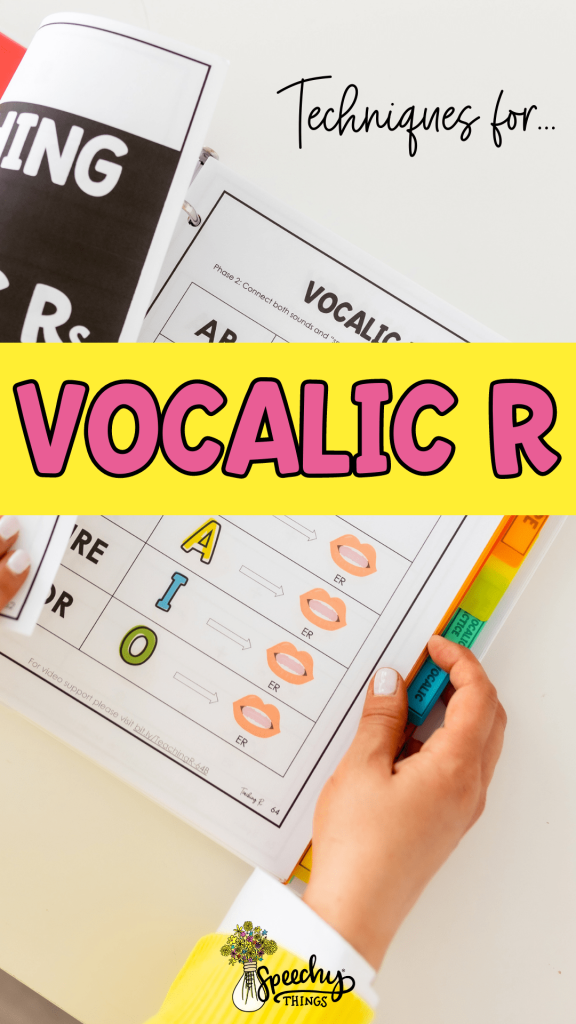
I’ve gotten several questions lately about the dreaded vocalic R. I get it . Vocalic R is… complicated.
There are so many of them (AIR, EAR, IRE, OR, AR, ER). They behave differently depending on whether they’re sandwiched between two vowels or if there’s a consonant thrown in next to it. It’s a lot to deal with. BUT…
Vocalic Rs can also lend themselves nicely to facilitating contexts. (AR and EAR tend to be some of my favorites for elicitation though some students seem to find AR very tricky. Every person is so different!). Here’s how I typically tackle it.
Once the student can say the R in any context, I like to break vocalic Rs down like this:
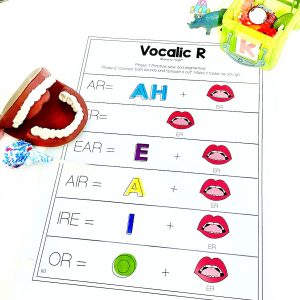
(Page from Teaching R )
I teach many of my students to think about their vocalic R like two different sounds: the vowel + R. With the exception of ER, where you have to shoot straight into the position for R from the previous consonant, the rest of the vocalic Rs (EAR, AIR, IRE, OR, AR) have a nice juicy vowel to give the brain and tongue plenty of time to move into that nice, strong R sound.
Also a little secret for you… if you pay close attention sometimes it’s actually the vowel that’s giving a student grief. I use a lot of explicit directions, visuals (like above), and even hand gestures to help them understand to not let the vowel and the R mush together. The tongue should not move into the R during the vowel or it will distort the word. Bringing out a mirror can be helpful for this as well.
Next time your student’s vocalic R sounds off, remember this blog post and give that visual a try! For more R tips, be sure to sign up for my VIP emails . I send helpful stuff about once a week, give-or-take. You can unsubscribe any time. I hope this was helpful!
You’ve got this!

Share this:
Comments are closed.
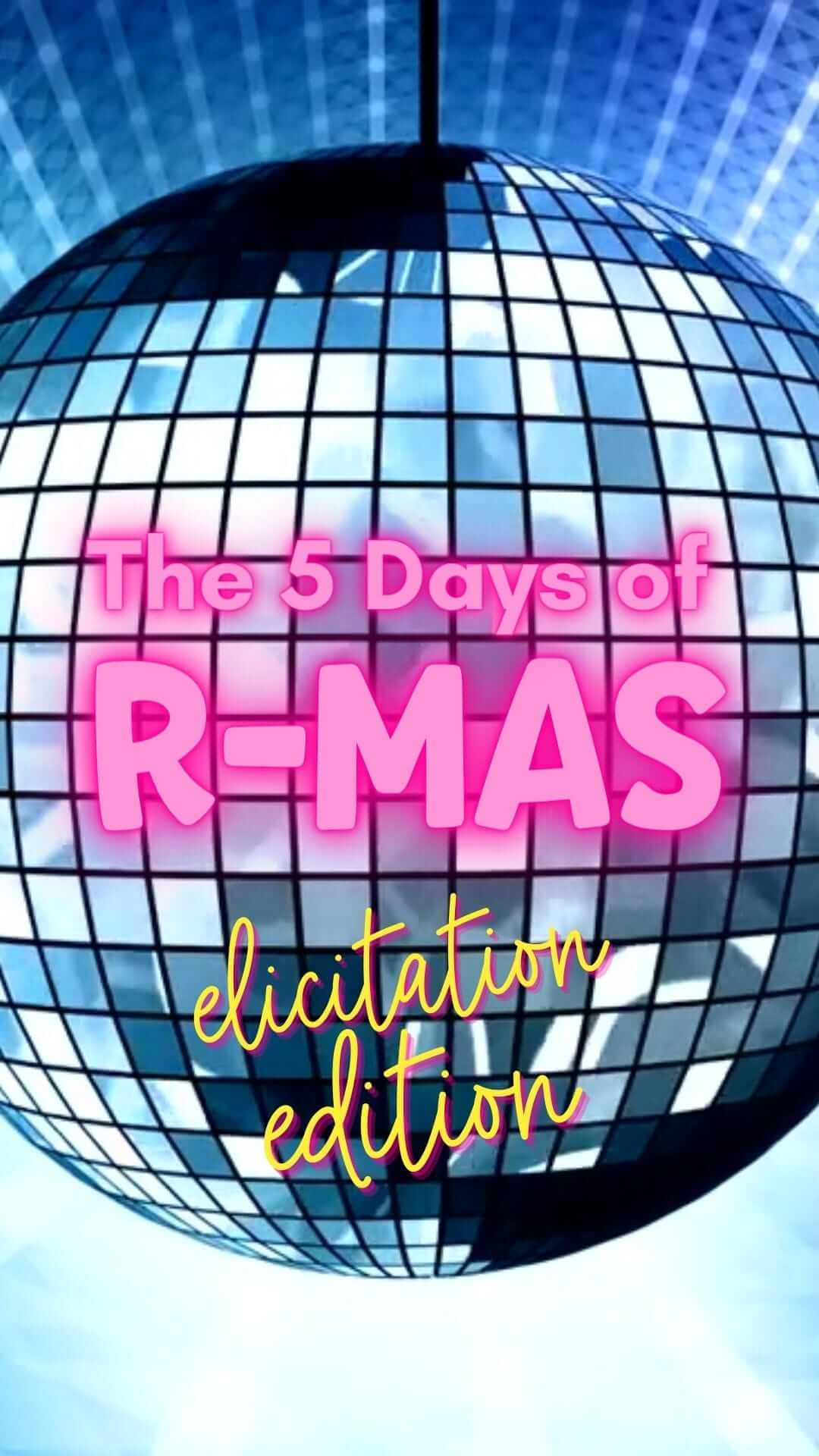
Hi! I'm Lindsey!
I’m a pediatric SLP who specializes in the R sound. Fun fact- I actually used to dread the R but after dedicating a lot (like… a lot a lot ) of time to researching and troubleshooting… I now love it! So much, in fact, that I currently spend my days treating “R kids” via my private practice and creating R resources and continuing education for SLPs via Speechy Things. I’m so glad you found me! Let’s “Rock the R” together!
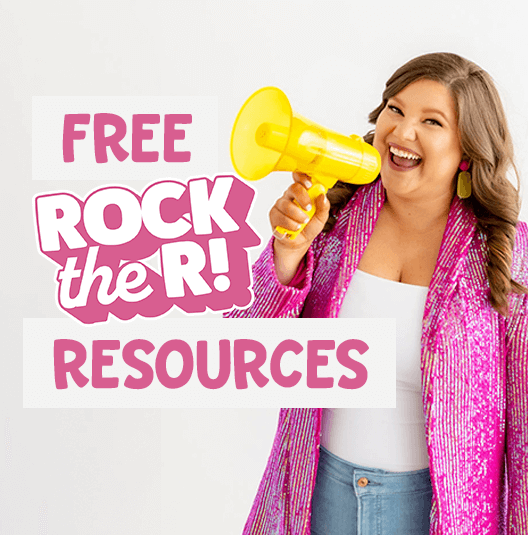
- Shop SpeechTreeCo.com
Ultimate R Minis
"something i looked forward to every week.".
“I’m so grateful I was able to work with Lindsey. As a teenager, it has been a blessing to find an SLP as encouraging and approachable as Lindsey. Her method of self reflection has really helped me realize the flaws in my speech, and through that I was able to improve. Every session was met with a smile, and Lindsey’s supportive practices made therapy not only fun, but something I looked forward to every week. Thanks to Lindsey I was able to undo fifteen years of poor R’s, and replace it with strong, understandable speech.”
- Anna, 15-year-old client
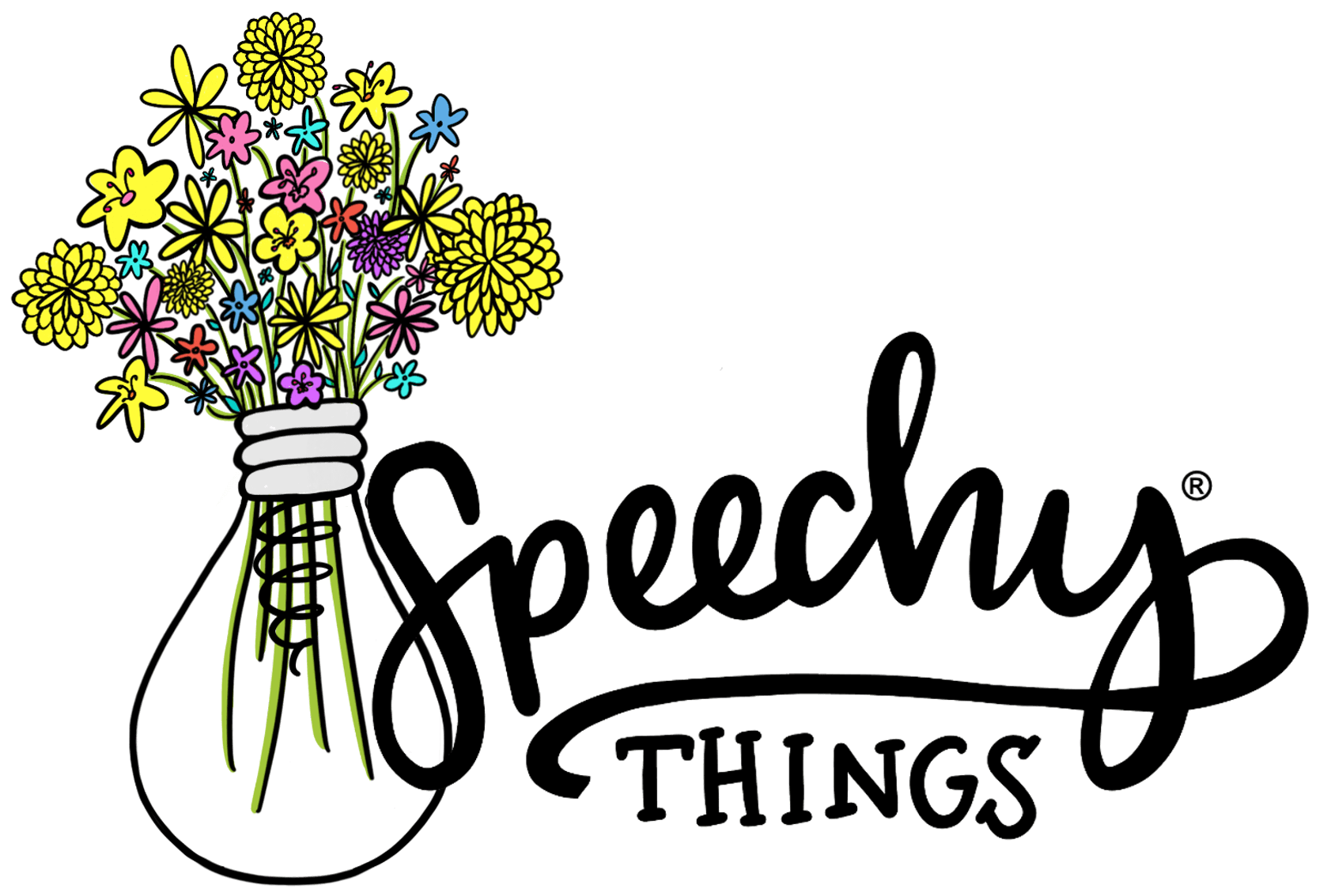
© Copyright Speechy Things, LLC. 2023 | All Right Reserved Privacy Po licy | Terms of Use
Search SpeechyThings.com
Looking for something specific, or click a category to get started, free resource library, r goal bank, r sound cue database, consultations, therapy services, contact & faqs.
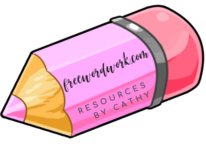
word work resources for teachers & parents
Vocalic R Worksheets for Speech
Sharing is caring!
Add these Vocalic R Worksheets to your speech therapy collection of printables for practice.
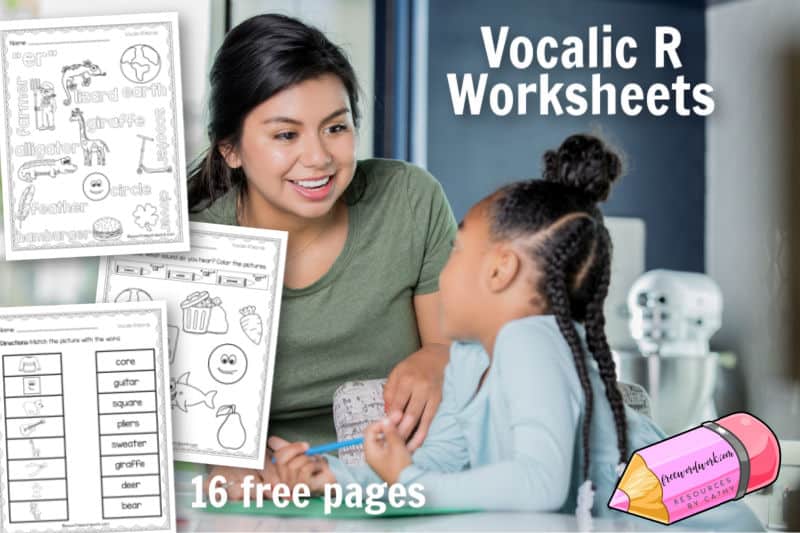
This is another free resource for teachers and families from www.freewordwork.com.
I have created these free Vocalic R Worksheets for speech therapy to help children work on speech sounds.
This set was a request from a speech therapist – if there are other resources you would find helpful, please let me know!
If you are looking for practice at home with your child while they are not receiving services at school, these might be helpful for you.
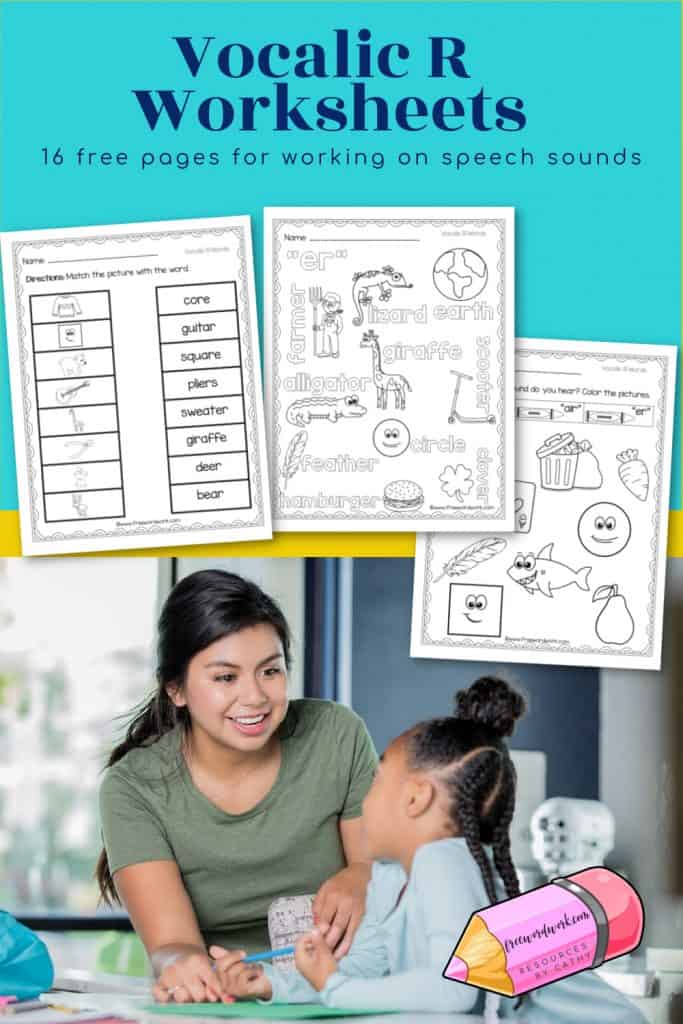
What are Vocalic R Words?
These worksheets are different than the other worksheets found in my phonics collection.
These pages specifically focus on speech sounds – not repeated letter patterns.
The vocalic r words contain a vowel or vowel pair followed by an r. These pages focus on the sounds ar, air, er, ere, ire and or.
Because of this, the letter combinations on the focus pages will be in quotation marks. For example, one page has “or” at the top. The words on this page contain words with or and other words with other letter combinations that will make the same sound.
The or page contains the words sword and dinosaur – even though the “or” sound in dinosaur is not made by an or combination.
About these Vocalic R Worksheets
This set contains 16 free pages. The pages are set up in three different formats.
My idea is that each page contains pictures and words that the child and teacher can work on together. All of the words focus on vocalic r sounds.
After pronouncing the words together, there is an activity the child can complete independently.
Or, the page could be sent home for the child to complete the activity with a parent as part of continuing practice.
The first set contains a row of pictures. Children will draw the line between the picture and the word.
The second set contains one sound. There are then words with matching pictures containing the sound. After practicing the words, students can color the pictures. They might circle the letter combination that produces the sound.
The final two pages list the focus sounds at the top. Children will use the color key to color the pictures according to the directions.
You can download this free set of Vocalic R Worksheets here:
Speech Pages
Looking for other free resources? Try these:
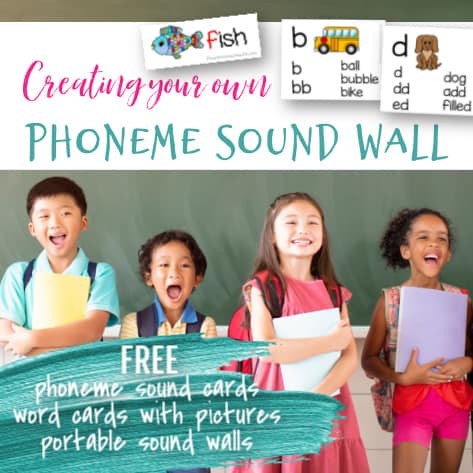
Thank you to Speech Doodles and Hidesy’s for the clip art used in creating this set.
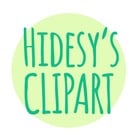
Leave a Comment Cancel Reply
Your email address will not be published. Required fields are marked *
Save my name, email, and website in this browser for the next time I comment.
Mastering The Vocalic R Sound in Speech Therapy
There are many benefits to mastering the vocalic R sound in speech therapy. Children who can properly produce this sound have better articulation, pronunciation, and enunciation of words. In addition, they often have an improved ability to understand and be understood by others when speaking. If you are a parent or caregiver of a child who is working on mastering the vocalic R sound, here are a few tips to help support them in their efforts.
In this article we will discuss:
What is the vocalic R sound?
Steps to produce the vocalic r.
Vocalic R and articulation
Why is it important for children to master the vocalic R sound?
Activities that you can do at home to practice vocalic r, tips for parents, when to seek professional help.

The vocalic R is a different type of sound R. The normal R sound is made by touching the
tongue to the roof of the mouth. The vocalic R is made by pushing the tongue back and curling it up. It is made by curling the tongue back and raising the back of the tongue. This sound is also sometimes called the retroflex R.
Step 1: Know the Difference
The first step to producing the vocalic R is to know the difference between it and the regular R sound. As we mentioned, the regular R sound is made by touching the tongue to the roof of your mouth. The vocalic R is made by pushing your tongue back and curling it up. Help your child feel the difference in their mouth by having them practice making both sounds.
Step 2: Relax the Tongue
The next step is to get your child to relax their tongue. This may seem counterintuitive since they need to curl their tongue back for the vocalic R, but it’s important that they start with a relaxed tongue. A tense tongue will make it difficult to produce the correct sound. To help your child relax their tongue, have them do some tongue exercises. Stick their tongue out as far as they can and have them wiggle it around. Or, have them make an “ooo” sound and then a “rrr” sound.
Let us teach your child that stubborn R sound!

Step 3: Curl the Tongue Back
Once your child’s tongue is relaxed, it’s time to start working on curling it back for the vocalic R. To do this, have them stick their tongue out and then curl the back of it up. They should imagine that they are trying to touch the roof of their mouth with the back of their tongue. Once they have the hang of this, have them practice saying words with a vocalic R in them.
Step 4: Practice, practice, practice
The only way your child is going to master the vocalic R sound is by practice. So, make sure that they are practicing regularly. Every day, if possible. You can help them by coming up with words that contain the sound for them to practice. And, don’t forget to praise them when they produce the sound correctly.
When starting to learn a sound, start by teaching them to produce the sound at the initial word position. This will help the child to learn how to produce the sound. After the child is able to produce the sound at the beginning of words, move on to teaching them how to produce the sound in other positions within words. Then, children will start to learn how to produce the sound in sentences. This is the final step in teaching the child how to produce the sound correctly. Again,
Teach your child to produce the sound at the beginning of words.
Teach your child to produce the sound in other positions within words.
Teach your child to produce the sound in sentences.
The only way your child is going to master the vocalic R sound is by practice. So, make sure that they are practicing regularly. Every day, if possible. You can help them by coming up with words that contain the sound for them to practice. And, don’t forget to praise them when they produce the sound correctly. With time and practice, your child with a speech impairment will be producing the vocalic R sound like a pro!
Example of words with vocalic R includes:
These are some of the words that have the sound of vocalic R in them. There are many other words too. You can help your child practice by coming up with other words that have this sound. With time and practice, your child will be able to produce the sound correctly and fluently.
Vocalic R and coarticulation
Coarticulation is when two sounds are produced at the same time. The vocalic R is often produced with other sounds. This means that when your child is working on producing the vocalic R, they may also be working on other sounds. This is actually one of the reasons why children have a hard time spelling words with a vocalic R in them. They may be able to say the word correctly, but when they go to spell it, they have trouble because they are used to producing the sound with other sounds.

These are just a few tips to help your child master the vocalic R sound. If you have any questions or concerns, be sure to speak with your child’s speech therapist. They will be able
to give you tailored advice based on your child’s individual needs.
There are many reasons why it is important for children to be able to produce the vocalic R sound correctly.
First, this sound is made in many common words. This means that if your child is not able to produce the sound, they may have trouble with some everyday words. It may result to a speech impairment. Second, the vocalic R is often produced with other sounds. This means that if your child is not able to produce the sound correctly, they may have trouble with some common words that contain this sound.
Third, the vocalic R is an important sound in English. It can change the meaning of a word if it is not produced correctly. For example, the word “right” can mean “correct” or “opposite of left” depending on how the vocalic R is pronounced. Finally, children who are not able to produce the vocalic R sound correctly may have trouble with reading and spelling words that contain this sound.
While there are many reasons why it is important for children to master the vocalic R sound, these are just a few of the most important ones. If you have any questions or concerns, be sure to speak with your child’s speech therapist. They will be able to give you tailored advice based on your child’s individual needs.
This is why it’s so important to get started early with speech therapy. The earlier your child starts , the more likely they are to reach their speech and language milestones. If you think your child could benefit from speech therapy, contact a speech-language pathologist in your area. They will be able to assess your child’s needs and develop a treatment plan to help them master the vocalic R sound.
Here are some activities that you can do at home to help your child practice the vocalic R sound:
Make a list of words that contain the vocalic R sound. Help your child practice saying these words.
Play word games that focus on the vocalic R sound. You can find some games online or make up your own.
Read books together that contain words with the vocalic R sound. Help your child identify and say the words that contain this sound.
Listen to music together that contains words with the vocalic R sound. Help your child sing along and identify the words that contain this sound.
Practice making the vocalic R sound in different positions in words.
Children with speech impairments often have trouble with other sounds as well. Just like any other communicative difficulties, here are some tips parents should know to maximize their child's development.
Be patient. It takes a lot of time and practice for children to learn to produce the vocalic R sound correctly. Do not get discouraged if your child is not making progress as quickly as you would like.
Practice, practice, practice. The more you help your child practice the vocalic R sound, the better they will become at producing it.
Give positive feedback. When your child produces the vocalic R sound correctly, be sure to give them lots of positive feedback. This will help them feel motivated to continue practicing.
Seek professional help. If you think your child could benefit from speech therapy, contact a speech-language pathologist in your area.

If you have concerns about your child’s speech and language development, it’s important to seek professional help. The vocalic R should be mastered at the age of 4 years, and if your child is not producing this sound correctly by this age, they may need speech therapy for their speech impairment.
A speech-language pathologist will be able to assess your child’s needs and develop a treatment plan to help them master the vocalic R sound. Speech-language pathologists not only assess your child's speech but also look at the way your child uses and understands language. This is important because many children who have trouble with speech also have trouble with language.
You can find a speech-language pathologist in your area by searching online or asking your child’s doctor for a referral.
The vocalic R is an important sound in English. It can change the meaning of a word if it is not produced correctly. For this reason, it’s important for children to master this sound. If you have concerns about your child’s speech and language development, it’s important to seek professional help. A speech-language pathologist will be able to assess your child’s needs and develop a treatment plan to help them master the vocalic R sound.
At Better Speech, we offer online speech therapy services convenient for you and tailored to your child's individual needs. Our services are affordable and effective - get Better Speech now.
About the Author

Mikee Larrazabal
I am a Speech-Language Pathologist with 14 years of experience working with children and adults who have communication difficulties. I completed my Bachelor of Science degree in Health Science at Cebu Doctors' University and have been helping people overcome their communication challenges ever since.
I have worked with individuals of different ages, including toddlers, preschoolers, school-aged children, adults and seniors. I'm passionate about speech therapy and take great satisfaction in helping people overcome their communication challenges and improve their lives through better communication skills. In my spare time I like reading books, going hiking in nature and taking care of my dog Locas.
- At Home Speech Therapy
- Articulation Speech Therapy
Related Posts
The troublesome R sound – Why is it difficult to say?
Comentarios

Get Free Guide to Improve Speech
Improve your communication skills

Improve your child’s speech

by Patricia D. Myers
I'm not an English native speaker and I wanted to improve my speech. Better Speech onboarding process is AWESOME, I met with different people before being matched with an AMAZING Therapist, Christina. My assigned therapist created a safe place for me to be vulnerable and made all the sessions fun and helpful. Thanks to her, I received great feedback from my clients.
by John L. Wilson
Better Speech is a great program that is easy to use from home and anywhere online. Shannon was amazing at engaging our shy son - and building on their relationship each session! Her commitment to knowing him improved his confidence to speak and practice more. Truly appreciate her dedication. She cares for her clients.
by Christy O. King
Better Speech is an excellent opportunity to improve your speech in the convenience of your home with flexible scheduling options. Our therapist Miss Lynda was nothing short of amazing! We have greatly appreciated and enjoyed the time spent together in speech therapy. Her kind, engaging and entertaining spirit has been well received. She will surely be missed.
by Patricia W. Lopez
This service is so easy, i signed up, got a therapist and got to set up an appointment right away that worked with my schedule. so glad to see that services like speech therapy are finally catching up to the rest of the convenience age! therapy is great, i can't believe how many good tips, exercises and methods in just the first session. really recommend it!
Get stress-busting speech therapy tips & freebies sent straight to your inbox ➔
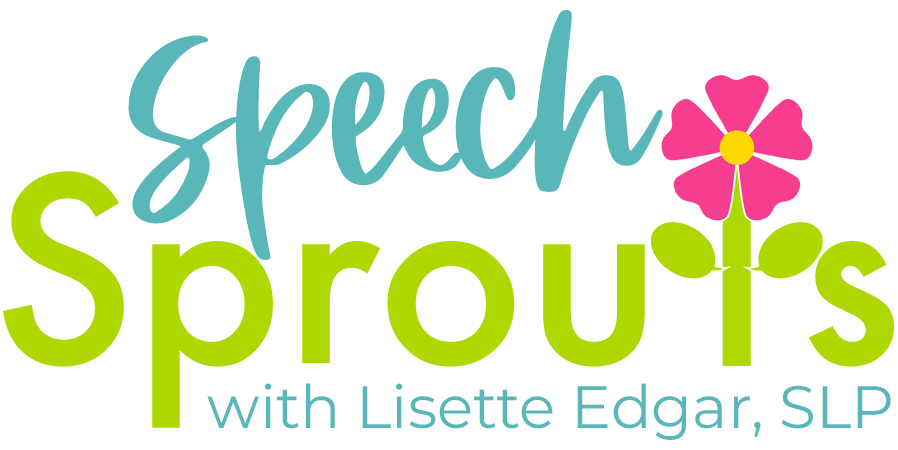
15 Extra Fun R Sound Articulation Games for Speech Therapy
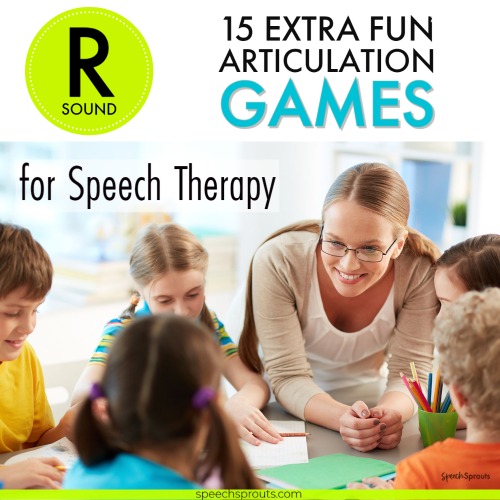
Games are a great alternative when articulation drills get, well… boring.
But can articulation games for speech therapy be effective as drill work? Absolutely!
You know it’s important to get plenty of repetitions when practicing the r sound in articulation therapy, and sometimes a few minutes of pure drills can be appropriate. But kids get tired of drills. You get tired of drills. Yawn.
So we try games to spice things up a bit. Play increases participation and focus if done right.
So how do you get in the mass r sound practice you need with a game?
The secret is to play games that don’t require a lot of set-up or a lot of gameplay time between turns to practice. And of course, you can have your student repeat their word or sentence for multiple repetitions each time they take a turn during the game. (Shhhhh, don’t tell them- that’s secretly drill work!)
While I love those toy-company games that pop, chomp, or crash, those get over-used too. So are you ready for some fresh ideas your kids will love?
These ideas are great for practicing prevocalic and vocalic r, and many will work just as well with other target phonemes too.
Articulation activities that will get kids up and moving:
1. Roam the Room : Each student gets a notebook or paper and a clipboard. They have 5 minutes to roam the room and write down all the items they find that begin with the r sound or have an r sound anywhere in the item’s name.
Next, head back to the table and have your students create sentences with one or more of the words in each sentence. Students score 1 point for every correct r word in their sentence, so longer sentences can boost their scores. Silly sentences are definitely allowed! Example: “The ruler ran right out of the room.”
For word-level practice, you can have your students repeat each word they found 10 times. Score a point for at least 5/10 correct with each word, 3 points if they get all 10 correct. This encourages them not to rush through the repetitions.
2. Beach Ball Toss : Blow up a beach ball and write R sound words on each section. You kids will stand in a circle, and toss the ball gently to another student. Whichever word the pointer finger is pointing to when the ball is caught is the word to practice. Try 10 or 15 repetitions for single-word practice, or have the student create a couple of sentences with their word.
Have a mixed group? Why not write a number from 1-10 on each space instead, then post each student’s numbered word list on the wall?
3. Hot Potato for Initial R : Students sit in a circle and pass a potato or a bean bag. As each student gets the “potato” they say an r word.
When the SLP says “reverse” the student must say the word given by the previous student and begin passing the “potato” in the opposite direction. If the SLP says “repeat”, the student repeats the last three r words they heard before passing the potato.
If you have the room, add some actions to the game! When the adult says “rabbit” the student hops around the circle and then sits back down in their place. You can also say “run” or “red” (Jump up and touch something red in the room and then sit back down.)
The object is to complete the action before it’s that student’s turn again (or in a smaller group, before play goes a specified number of times around the circle.)
4. Rip, Rap, Rope offers lots of tongue-twisting practice for initial r. It’s great for kids who have already established prevocalic r and need to work on consistency.
To play, your students stand in a circle. The first student claps their hands and says “rip.”The next student claps their hands and says “rap,” the next one claps and says “rope”. If a player says the wrong word or hesitates too long, that’s a strike. After three strikes, the player is out, and sits down, but can continue to say the words with the group. The last person standing wins!
Table games for articulation of R that makes practicing fun:
5. 101 and Done! This is an articulation game for older elementary students that uses dice. The goal is to build your score up to 101 points without going over. Give your students a pencil, one die, and a piece of paper with a list of their practice words, and room to keep score. They roll the die and say one of their words the number of times they rolled.
Your students then decide if they want to score the number on the die or multiply it by ten. For example, if they roll 3, they can choose to score 3 points or 30.
6. Connections This r sound game works well for students working on multiple word positions. The first student says a word that begins with an R sound. For instance, they may start with “rat.”The next student thinks of a word that begins with the last sound of the previous word but also contains an r sound anywhere in the word. For instance, they may say “tired”. The next student might say “dirt”.
Connections is a great game for your older elementary students. It works well as an r articulation activity for middle school too.
Play continues around a circle until a student can’t think of a word that fits. That student gets to make up a sentence using the last two words and then play begins again.
7. Dots and Squares I’ll bet you played this paper and pencil game as a kid! You can easily play this game with 2-4 students, making it great for mixed groups.
Provide a piece of paper with dots in a grid. Students take turns saying their word 5x or say sentences, then connect two dots to draw a line. Each time a student completes a square, they write their initial in the square and go again to draw another line.
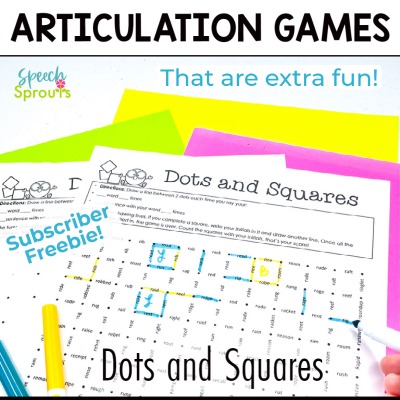
Want a Dots and Squares sheet that’s ready to print and go? I’ve created a page of just the dots, and also a page with both dots and initial r words. Get this free articulation game when you subscribe to Speech Sprout’s newsletter.
8. Articulation Chain : Tell your students they’re going on a trip and let them have fun getting creative with the location. You need to pack for your trip, but you can only pack things that have an r sound in the name. You kids can brainstorm words, or you can provide a list with their target sound.
The first student takes a turn and tells what they would pack. The next student repeats the previous item and adds a word. The next student repeats all previous items and adds a word. Challenge your students to see how many items in the chain they can remember!
9. Tell a Tale: Start a story and then have each student adds to the story using an r word. You’ll be surprised how creative your kids can be!
10. Never Have I Ever : This game is great for practicing vocalic r words. Students take turns finishing the sentence, “Never have I ever_____.” They must use at least one r word in their sentence. For example, they might say, “Never have I ever slept in a barn.”
Provide a list of target words, or let them generate their own! Target words can only be used once… so your kids will need to think of a new one on each turn.
11. Ready? Reach! This one works well for initial r practice. Fill a bag with pompoms, cubes, blocks, mini erasers or another small items that come in several colors. All the students say “Ready? The student whose turn it is says “Reach!” and reaches in the bag without looking, then pulls out one item and names the color they found. If they find a red one, they get a point.
12. Where’s the Pair? This is a variation on Ready Reach for vocalic R. Fill a bag as above. Your student practices a word or sentence, then everyone says “Where’s the Pair?” Your student reaches in and gets two items. If it’s a pair, you keep it and score a point. You can do this with cards or items. If you use cards, it’s fun to include a wild card that gives extra points.
More articulation R games for speech therapy that your kids will love!
13. Articulation R Bingo Riddles If you’ve played any of my Bingo Riddles Games, you know how much kids love guessing the answers to play. In addition to my holiday, seasons, and language skills Bingo Riddles, I’ve now created games for articulation too!
14. Articulation R Word Puzzles Games Crosswords, Word searches, Crack the Code, and Letter Shapes articulation activities. It includes pages for prevocalic r, vocalic r, and r blends. Print and go easy, you’ll enjoy pulling these out when you need engaging articulation activities for older students.
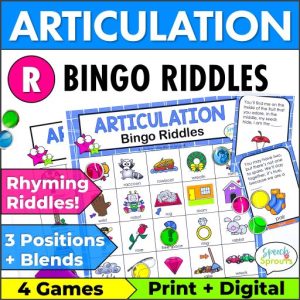
15. Articulation Pattern Blocks is a Boom ™ Cards game. Your students say their words, then slide a pattern block to complete the fun patterns.
Head over to Boom ™ Learning to try out the live previews for the Prevocalic R and R Blends Pattern Blocks or the Vocalic R and RL blends Pattern Blocks .
I also have an Articulation Pattern Block Bundle for you which includes activities for R, L, S, TH, and blends.
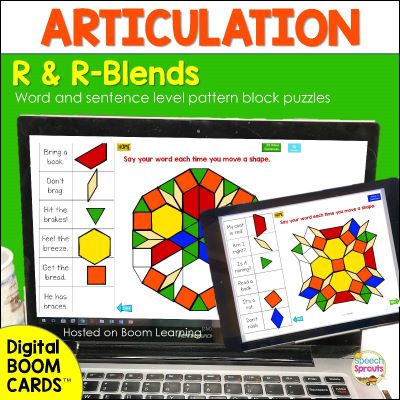
Boom™ is the trademark of Boom Learning. Used with permission.
I’ve got some articulation therapy tips for you when working on those r sounds:
If you need some fresh tricks for establishing that r sound, check out this post:
The Best Articulation Tricks to Try for Those Super Stubborn R’s
Are you working on the conversational level? Congrats! You may want to try these tips for easy data-taking:
3 Easy Ways to Take Articulation Data at the Conversational Level.
I hope you found some new R sound articulation games for speech therapy that you’ll love!
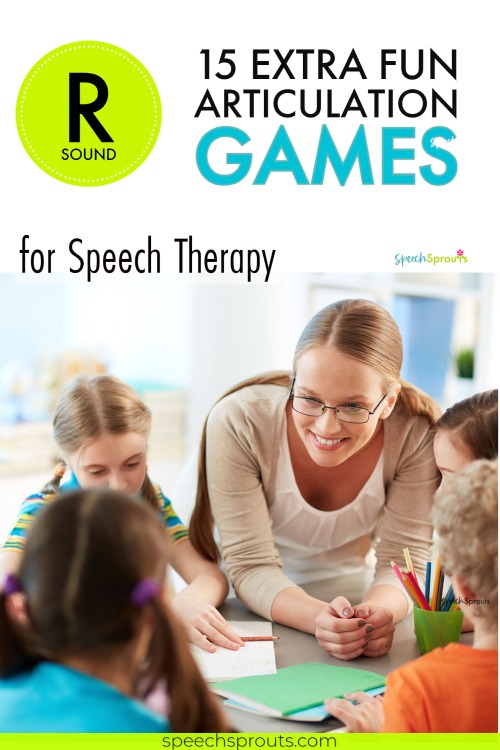
Tip: Why not pin this post for later? That way, you can quickly find the list when you’re in need of a fresh articulation r activity. Have fun!
- Read more about: Articulation
You might also like...
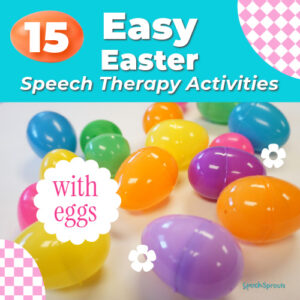
15 Easy Easter Speech Therapy Activities and Games with Plastic Eggs to Try
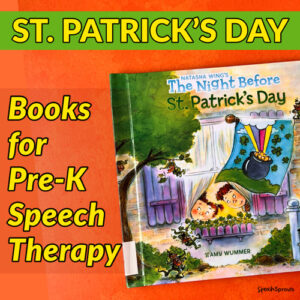
7 St. Patrick’s Day Books for Preschoolers to Love
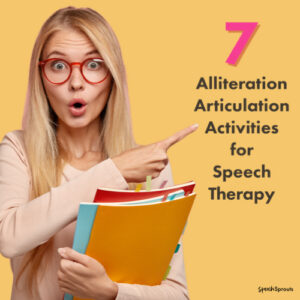
7 Awesome Alliteration Articulation Activities for Speech Therapy
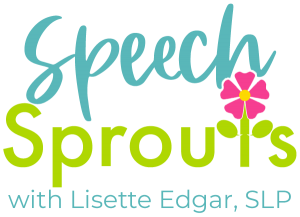
Join the Newsletter
Get my best tips, news and the inside scoop on new posts, products and special sales, and of course…exclusive freebies just for subscribers!
© Speech Sprouts • Website by KristenDoyle.co
FREE position concepts activity
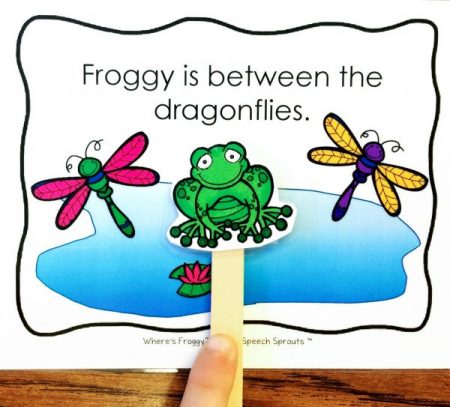
Sign up to get my newsletter filled with fun, fresh ideas for speech therapy, and I’ll send you this adorable position concepts freebie, Where’s Froggy?
I’ll regularly send you my best tips, news and the inside scoop on new posts, products and special sales, and of course…exclusive freebies just for subscribers!

- Free Worksheets

I created these free speech and language worksheets so you can easily download and print them out to use as part of your speech therapy program. Just scroll down the page to view the worksheets by topic. You will find free speech therapy worksheets for articulation, vocabulary , grammar, holiday articulation and language games…and lots of other miscellaneous speech therapy creations that I love! If you would like more information on what articulation therapy is you might like to read a post I have written called Teaching Speech Sounds: The Process of Traditional Articulation Therapy
Parents: If you are a mommy or a daddy (or grandma or grandpa) who wants to work with your child at home, you can use these speech therapy activity pages for extra practice. Just choose the sound position to work on (initial, medial, or final) and click on the corresponding link to view and print the worksheets. To help make practice more fun, you can print out two of the same page so you have pairs, cut them out, and use them to play a game of memory or go fish. You can also use them as flashcards. You will find free speech therapy worksheets by sound and at a variety of levels; word level, phrase level and sentence levels!
Articulation Worksheets
Speech Sounds in Syllable Wheel

/th/ Sound Voiceless

/th/ Sound Voiced

Grammar Worksheets
Regular past tense.

Irregular Past Tense

Third Person Singular

Vocabulary Worksheets – Holiday and Seasonal Themed
Fall & autumn memory game, christmas vocabulary 1, christmas vocabulary 2, summer vocabulary, summer vocabulary companion, grammar bingo games – holiday and seasonal themed, grammar bingo games.

Vocabulary BINGO Games – Holiday and Seasonal Themed
Vocabulary bingo - winter, concepts bingo - christmas, conceptual vocabulary bingo - back-to-school, conceptual vocabulary bingo - fall, conceptual vocabulary bingo - spring & easter, lemonade stand bingo - summer, 4th of july vocabulary bingo - summer.

Quick Links
- Work With Me
Copyright © 2021 Heather's Speech Therapy
- Articulation
- Social Skills
- Accessories
- Journals & Notebooks
- Mugs & Tumblers
- Phone cases
- Stickers & Magnets
- Long sleeves
- Sweatshirts
- Baby clothing
- Hoodies & Sweatshirts

IMAGES
COMMENTS
yarn basket. He pushed the button on the alarm. The soldiers in the army stood at attention. You can see art at the museum. The dog's bark is scary. The car is fast. We will play a game with cards. It was dark, but the moon was out. Every summer he visited his grandparents on the farm.
Here's an r word list for you to use in therapy or at home practice to work on your student or child's speech. For Example: run, rest, ride, rake, root, parade, tarp, harp, worm, farm, soccer, wire, weather, faster, baker. See full list of 1220+ R words at the word level, phrase level, and sentence level here.
Free Worksheets for R. Speech Therapy Chart for Vocalic R. Free Training for Affricates. Implementing Yogic Techniques. Frontal Lateral Lisp Disorders. Free SLP Resources. Graduate CFY Material. Parent and Teacher Resources. Assessment Flow Chart for Vocalic R.
Occasionally, students might substitute l for r (for example, "light" for "right"). R might also be substituted by a "y" sound (an example would be "ram" vs "yam"). Other R speech sounds might lose their "R" quality and sound more like a vowel sound. "ER" might be placed by a neutral schwa, for example.
FreeSLP offers tons of virtual SLP materials for the Vocalic (Vowelized R) R Sound. To help target the Vocalic R sound in the initial, medial, and final positions, we have created Vocalic R Tic-Tac-Toe, Connect 4, Virtual Flashcards, Virtual Progression Cards, Battleship, Spot-It, Candy Land, Soccer, Painting, and more!
4. Erik Raj has these super fun Mini homework sheets for articulation. These mini R articulation worksheets have great silly R sentence questions that students can read and discuss. One way to incorporate more R sentence level practice is to have your student ask a friend, teacher, and parent the silly question outside the speech therapy session.
Use "ER" to shape prevocalic R in speech therapy. And finally, to elicit the initial R, we can use our "ER" sound ("ERrrrrain…. rain). If you would like a great resource with ready-to-go worksheets and words that utilize this approach for treating R in your speech therapy sessions, be sure to check out my Correct that R resource on TpT.
Considering that there are six variations of the vocalic /r/ sound, we recommend that you practice with at least three words from each category in the word list. Here are some of our favorite carrier phrases: "I see a…". "I found a…". "I want a…". "He found a…". "She found a…".
The Entire World of R Probe Lists (Vocalic /R/) SKU: EWR-038 Price: $69.99. Create your own probe word lists and worksheets for vocalic /r/ using The Entire World of R methodology. Divided phonetically into 21 types of vocalic /r/ and 11 /r/ blends. Use for developing flash cards, drill sheets, games and stories.
Vocalic R and Speech Therapy - The Entire World of R articualtion strategy from Say It Right is a proven research-based program for evaluating and treating the difficult /r/ phoneme. ... Activities for all allophones of vocalic /r/ [air, ar, ear, er, ire, or] as well as prevocalic /r/, /r/ blends and recurrent /r/ are included. ...
I teach many of my students to think about their vocalic R like two different sounds: the vowel + R. With the exception of ER, where you have to shoot straight into the position for R from the previous consonant, the rest of the vocalic Rs (EAR, AIR, IRE, OR, AR) have a nice juicy vowel to give the brain and tongue plenty of time to move into that nice, strong R sound.
These worksheets are different than the other worksheets found in my phonics collection. These pages specifically focus on speech sounds - not repeated letter patterns. The vocalic r words contain a vowel or vowel pair followed by an r. These pages focus on the sounds ar, air, er, ere, ire and or. Because of this, the letter combinations on ...
The vocalic R should be mastered at the age of 4 years, and if your child is not producing this sound correctly by this age, they may need speech therapy for their speech impairment. A speech-language pathologist will be able to assess your child's needs and develop a treatment plan to help them master the vocalic R sound.
You will be shaping vocalic R from prevocalic/initial R. The student who is appropriate for this technique already has a good initial R, but is struggling with the vocalic R. So, we are using that initial/prevocalic R to help get the articulators in the right spot for the vocalic R. When using this technique, have the child say a vocalic R word ...
Vocalic R Coarticulation Flash Cards. $6.00. Teach the Vocalic R sound using these coarticulation activities in speech therapy! No print and no prep articulation activity option included! You will be shaping vocalic R from prevocalic/initial R. The student who is appropriate for this resource already has a good initial R sound, but is ...
5. 101 and Done! This is an articulation game for older elementary students that uses dice. The goal is to build your score up to 101 points without going over. Give your students a pencil, one die, and a piece of paper with a list of their practice words, and room to keep score.
Reading lists for each vocalic /R/ sound at the word, phrase and sentence-level. Games for 5-Minute Therapy, including the popular ENVELOPE GAMES for each targeted sound. Challenge sentences that include multiple vocalic /R/ sounds for older students. Homework activities for each targeted sound. Prepared percentage charts to calculate production
vocalic /r/ #1. square. care. hair. share. air. fair. first turn learn purse stir bird shirt earth nurse start park sharp farm chart heart guard dark star year weird near cheer beard sphere ear clear fire choir iron tired wore tyre lyre spire hire door bored store fork corn four sore pour north square care spare hair share tear air fair pear. 6.
Free Worksheets. I created these free speech and language worksheets so you can easily download and print them out to use as part of your speech therapy program. Just scroll down the page to view the worksheets by topic. You will find free speech therapy worksheets for articulation, vocabulary , grammar, holiday articulation and language games ...
for freedom of speech, freedom of assembly, and freedom of religion. Go into any courtroom, and there will preside an independent judge, beholden to no government power. There every defendant has the right to a trial by a jury of his peers, usually 12 men and women--common citizens; they are the ones, the only ones, who weigh the evidence
SPECIAL PSYCHOLOGIST, SPEECH AND LANGUAGE THERAPIST I am a special psychologist, a CBT specialist and SLT working with adults, adolescents and children. EDUCATION AND PROFESSIONAL DEVELOPMENT 2004-2009: Moscow Pedagogical State University, clinical psychologist & speech and language pathologist (diploma with distinction) 2012 - 2019 Russian National Research Medical University, paediatrics ...
Welcome to ESL Printables, the website where English Language teachers exchange resources: worksheets, lesson plans, activities, etc. Our collection is growing every day with the help of many teachers. If you want to download you have to send your own contributions. Moscow worksheet ...
Speech Therapy in Moscow on YP.com. See reviews, photos, directions, phone numbers and more for the best Speech-Language Pathologists in Moscow, ID.